
|
|
|
|
| In 2004, a programmer known as Bero promoted his Dreamcast port of the Quake engine with a screenshot of After The Fall, as it requires more memory than Quake and was unplayable on the earlier port by Titanium Studios. |
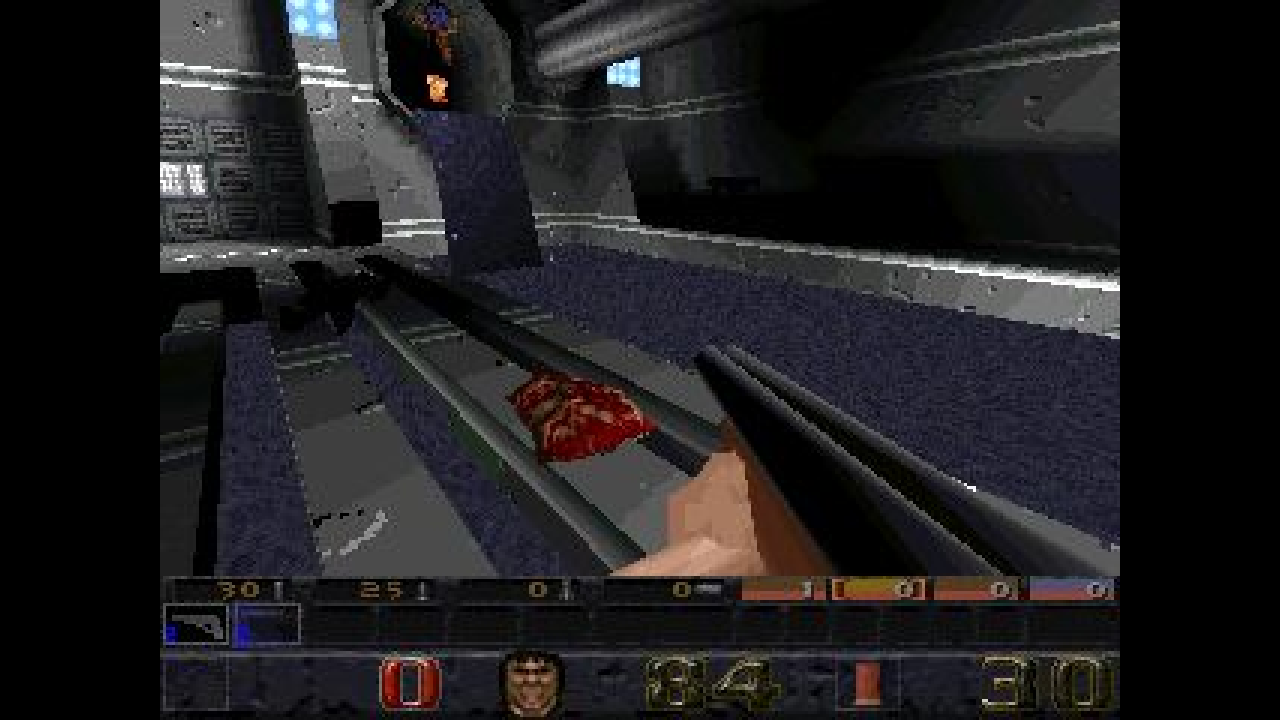
|
| Having previously played through the opening levels of the game, I found it to be fun, whilst also being impressed by how little of Quake remained in comparison to the other mods that I was playing at the time. |
| In 2018, I decided that getting the game running on one of the more advanced engines that was now available would allow me to get reacquainted with Quake modding, whilst also giving the community something new to play. |
| The developers of each port have all done some fantastic work, but the Makaqu engine was selected for this project as I felt that it offered the most polished experience overall. Unfortunately, it isn't compatible with RGB SCART, whilst RADQuake is, but the video mode selection screen of that engine wont display on most modern TVs over VGA, which is my preferred display type for the console. |
| RADQuake also features an animated player icon on the VMU screen. However, its loading screens do not display correctly, which detracts from the presentation. |
| Meanwhile, the development of nuQuake, which features hardware rendering, is extremely exciting, but that engine currently has some audio and visual issues that needs resolving. |
| The author of Makaqu, known as mankrip, was very generous with his time and was happy to consider my suggestions when updating the engine to version 1.5.2 in 2018. Unfortunately, I was unable to use this version as it doesn't render two of the players weapons correctly. However, it's worth noting that this is more an issue with the models rather than the engine, as they also appear incorrectly in other ports. |
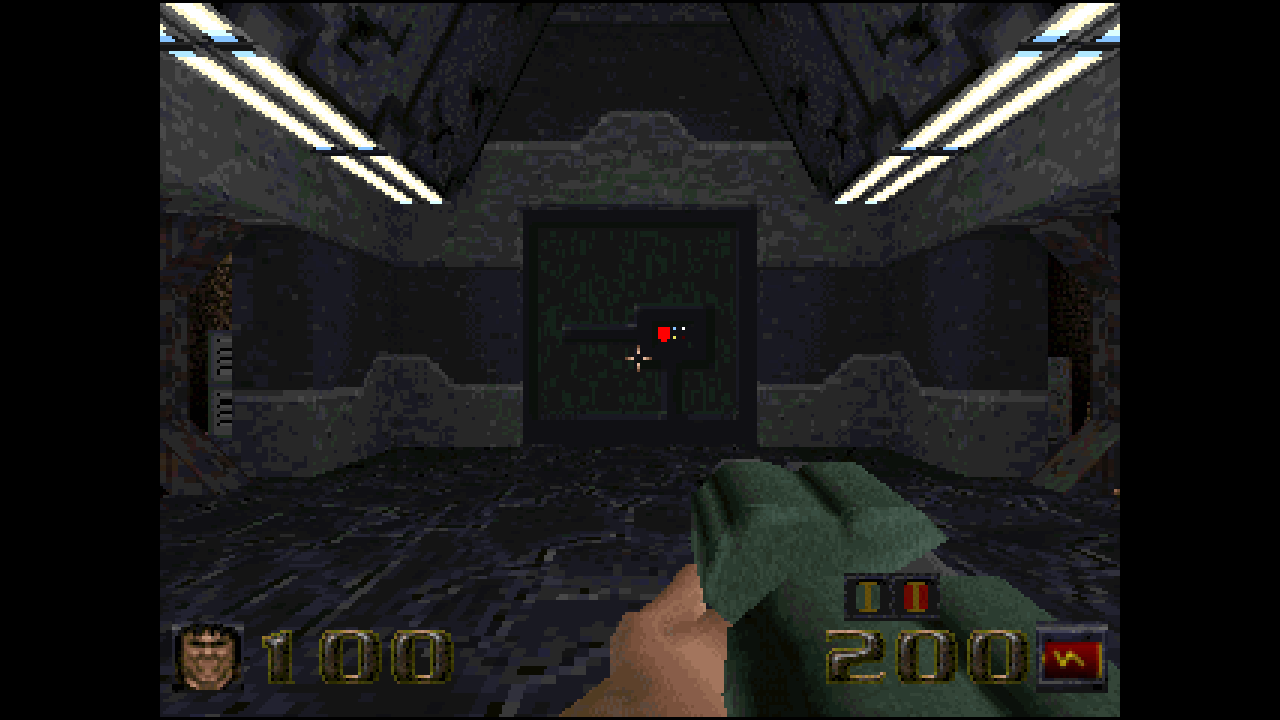
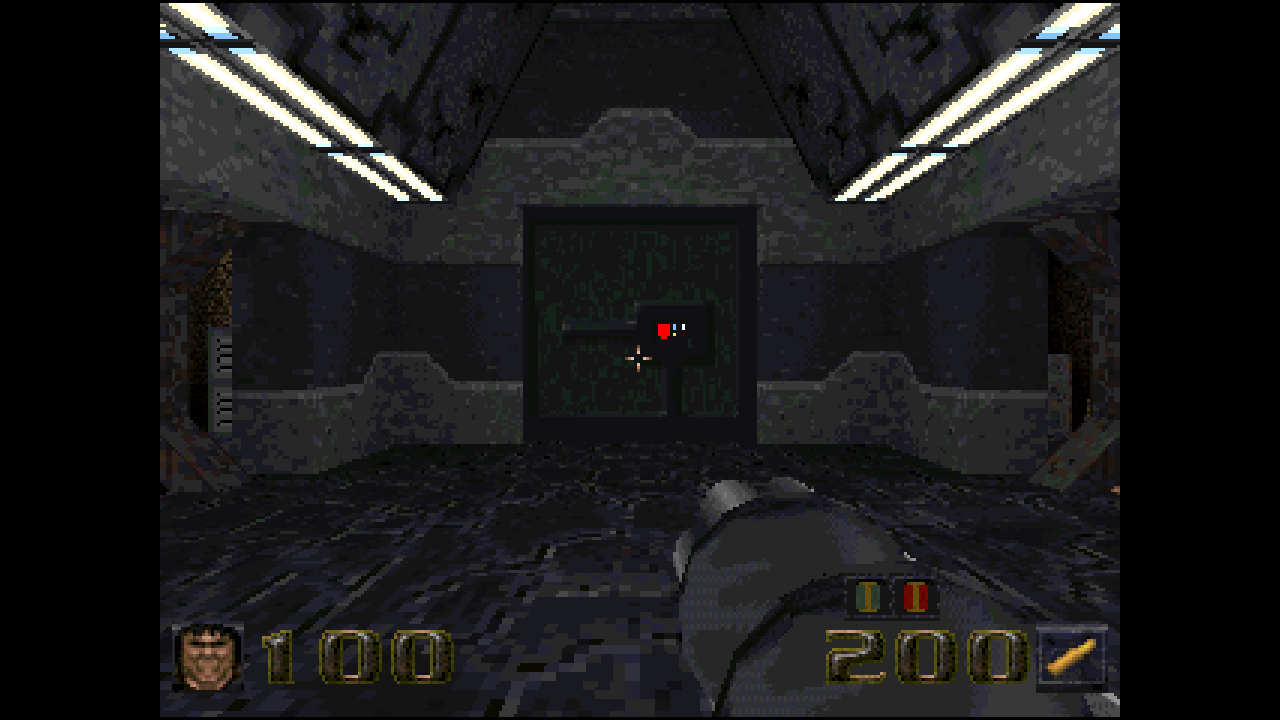
|
| Fortunately, the weapons appear fine in version 1.3 of Makaqu, and the game actually benefits from slightly better performance over later its versions. |
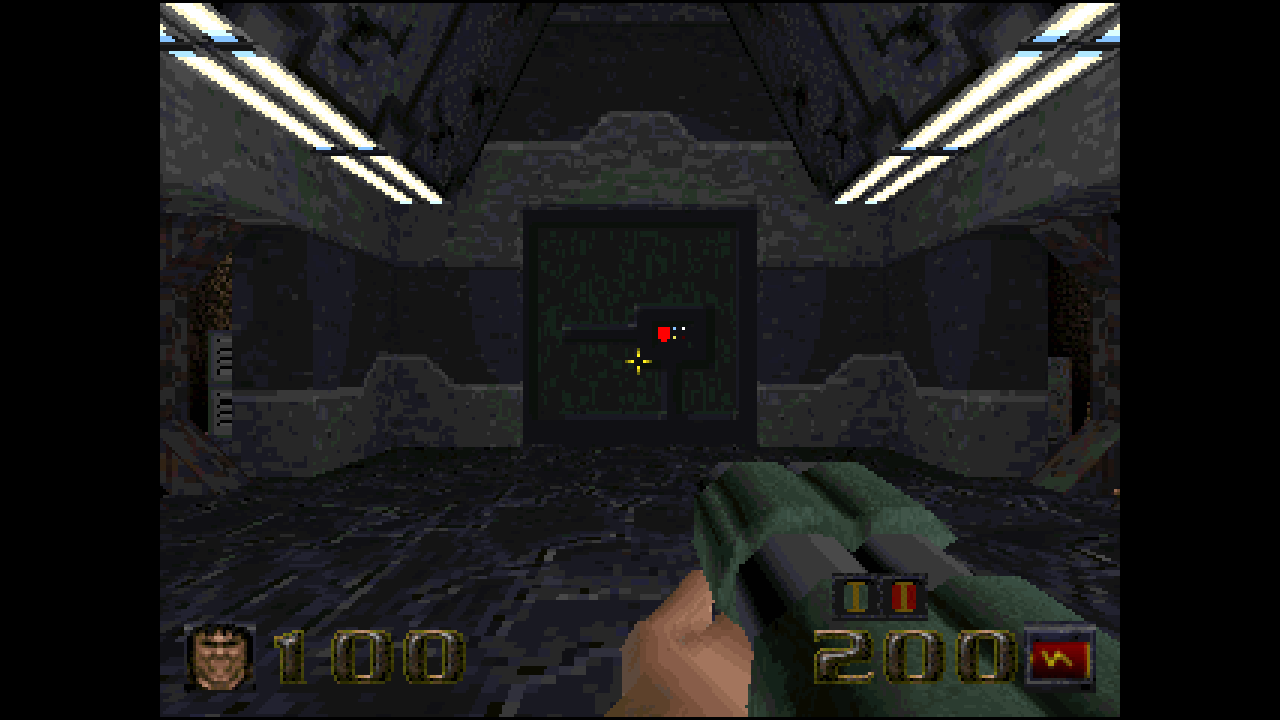
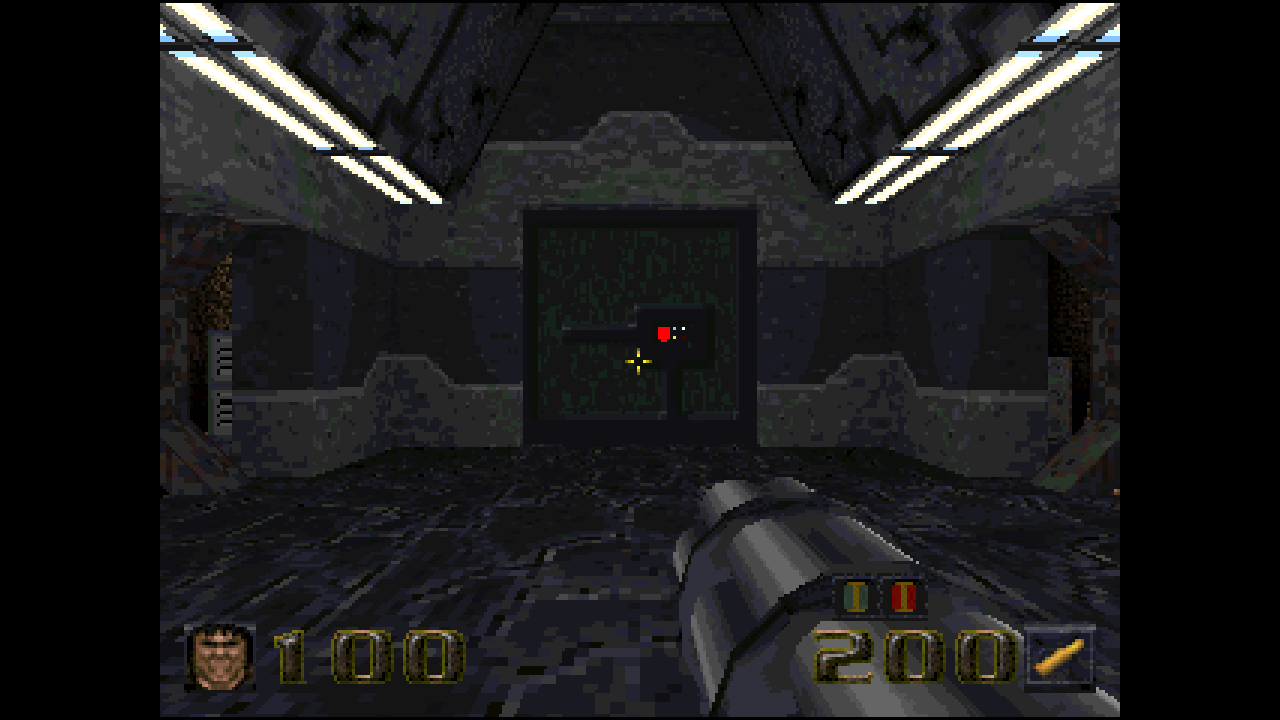
|
| Reducing the texture quality with a console command allowed the game to run, and for a moment I thought that there wouldn't really be any work to do, but as I played through the entirety of the game I encountered several major bugs and took issue with some of its design. |

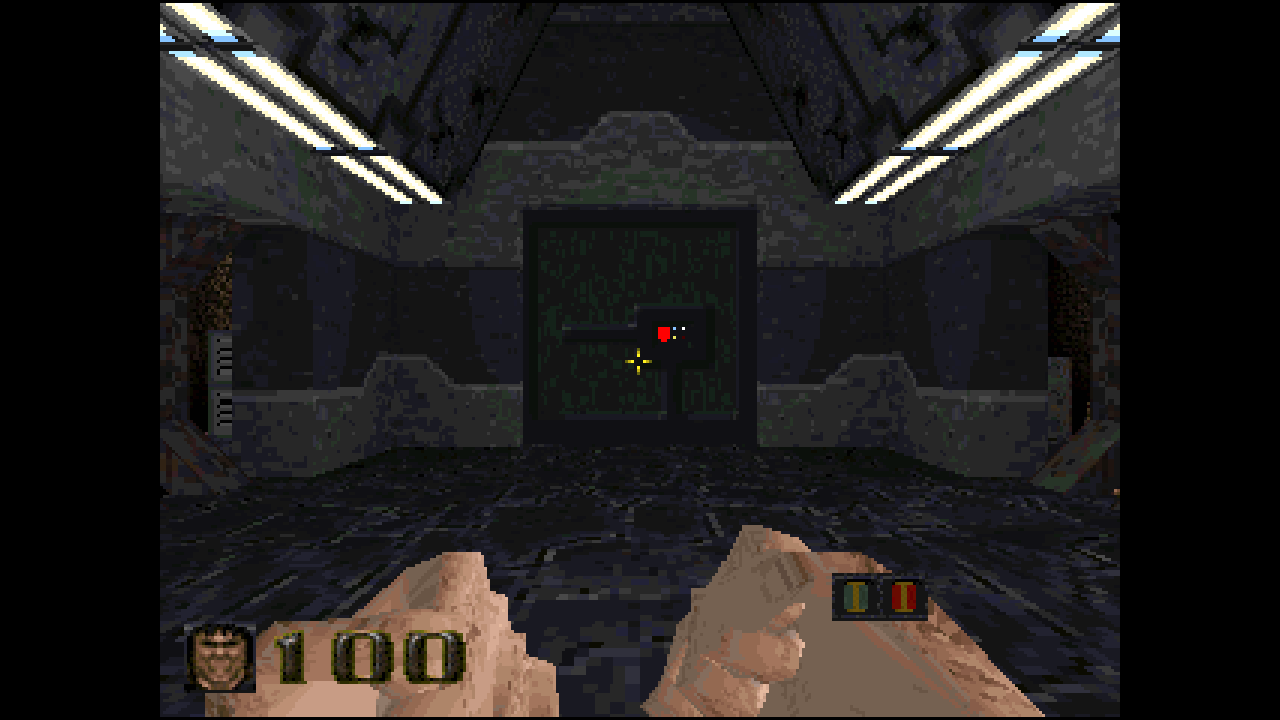
|
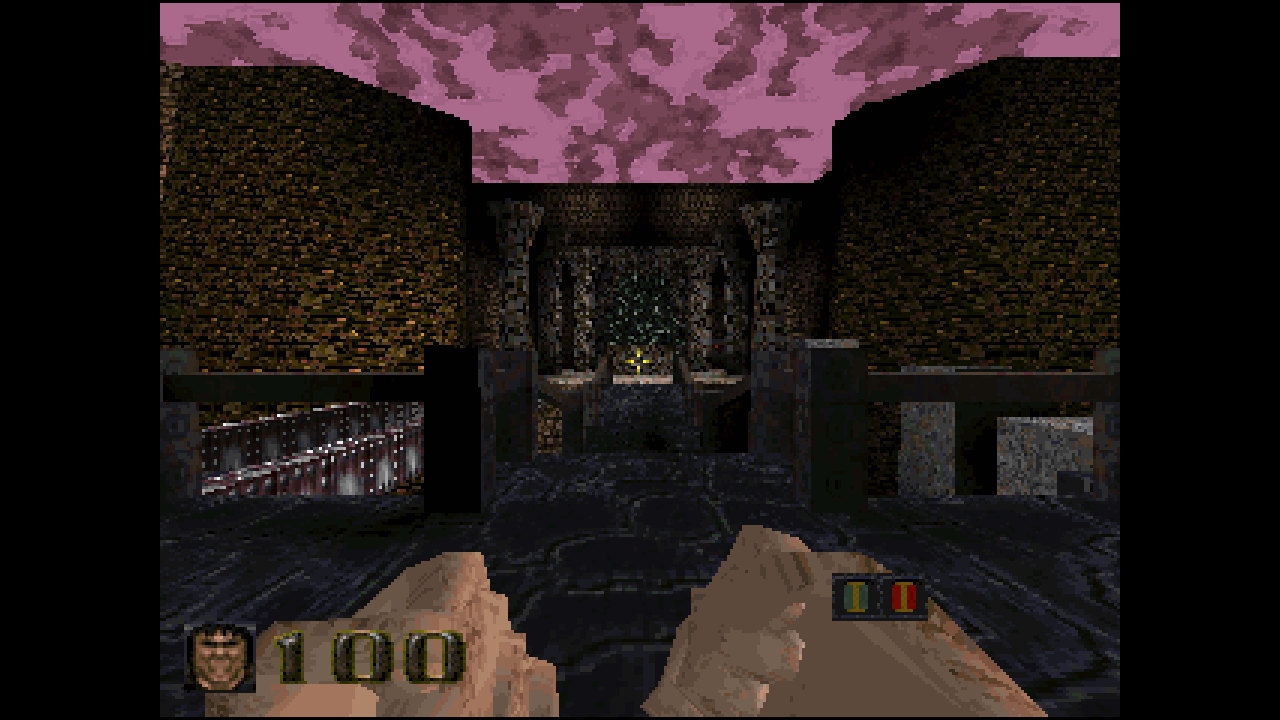

|
| I had tried to contact the developers of the mod before getting it running on the Dreamcast, but with this being a mod from 1997, I wasn't surprised when my emails bounced back and quick searches on Facebook and LinkedIn weren't fruitful. |
| Most of the issues with the game were tied to its maps, but as the source files for them were never released and I couldn't ask the developers for them, I searched for a solution and discovered EntEd. |
| As a text based tool with no 3D view of the level, there would be a lot of trial and error involved, and changes that would've taken less than minute to make in a map editor may now take up to several hours to perfect. |
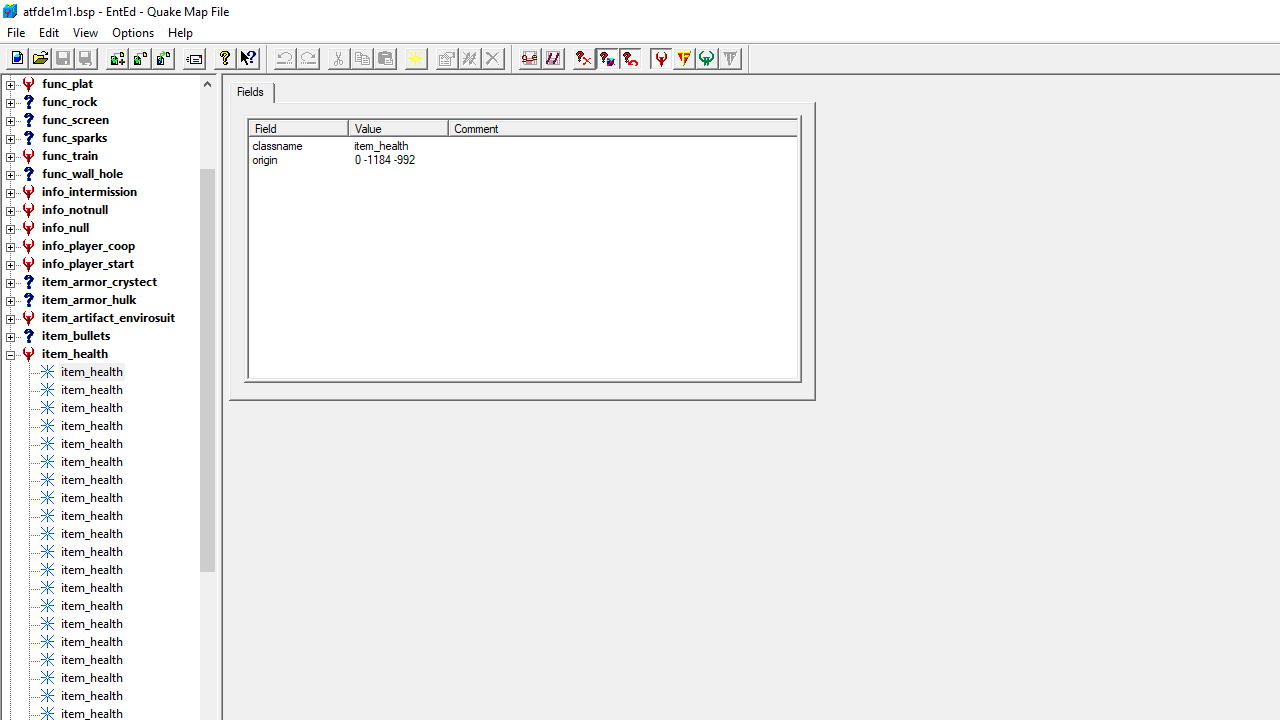
|
| E2M3 featured two game breaking bugs and couldn't be completed without the use of cheats, with one room that couldn't be escaped and the end section completely inaccessible. |
| The locked door was tied to a key card that isn't present in the level, so it was easily identified and removed, but then I found that the teleporter behind it hadn't been given a destination, and so I set one. |
| Several changes were made to the final area of the map beyond the wind tunnel being completed, with a power up removed as it was hard to reach and another previously blocked off teleporter being used to return the player to the sewers, in case they had missed the button that opens up the exit area. |
| The house in this area also suffered from a corrupt mipmap, resulting in a major visual issue, but I was able to use a program called TexMex to regenerate it. |

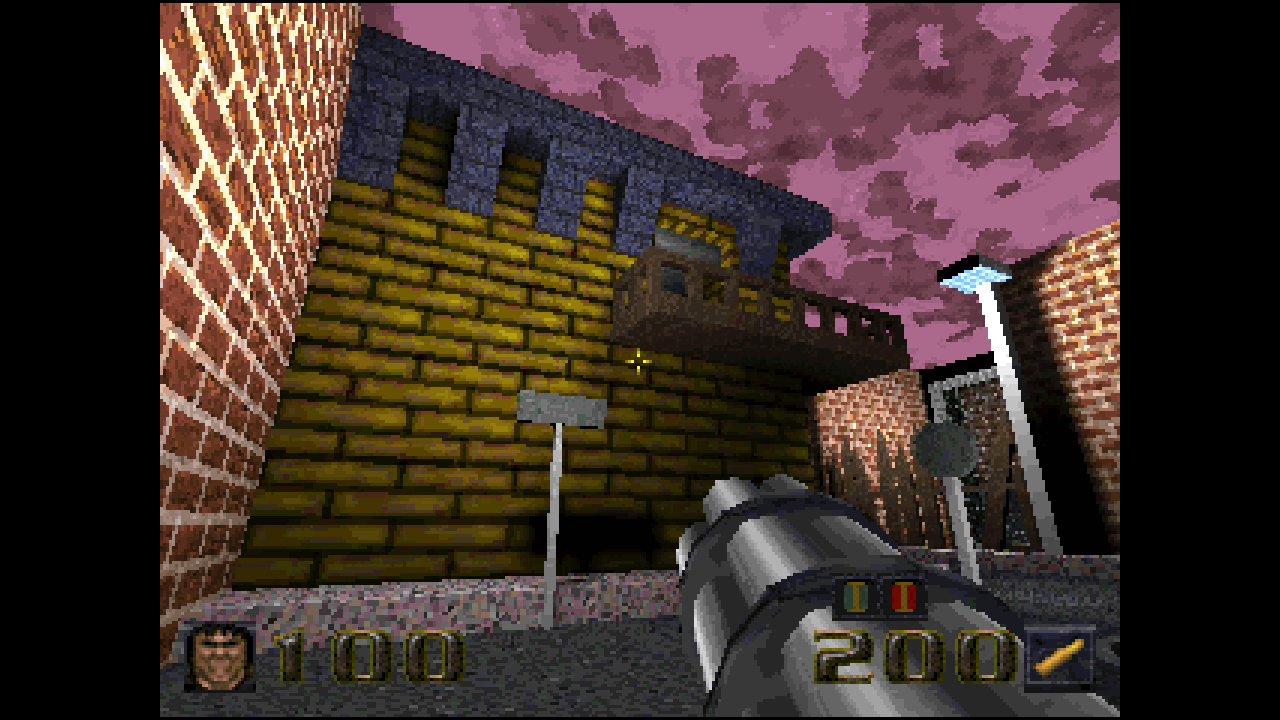
|
| In addition to all this, several levels feature wind tunnels, and it was easy to get stuck in some of them, requiring cheats to escape. |
| This was an interesting challenge as they are tied to brushes and the easiest solution would've been to alter their shapes and positions in a map editor. Instead, I would alter the force of many, favouring the direction that the player needed to be sent along next, whilst removing some that only caused clashes. |
| It was also possible to become trapped in a pit near the start of the final map, and so I placed a gush of air at one end of the pit that would throw the player out of it, along with a suitable sound effect to help them discover it. |
| Finally, a platform that must be raised in E2M1 wasn't rendering on Makaqu, and I found that it was down to several incomplete entities that were tied to it. |

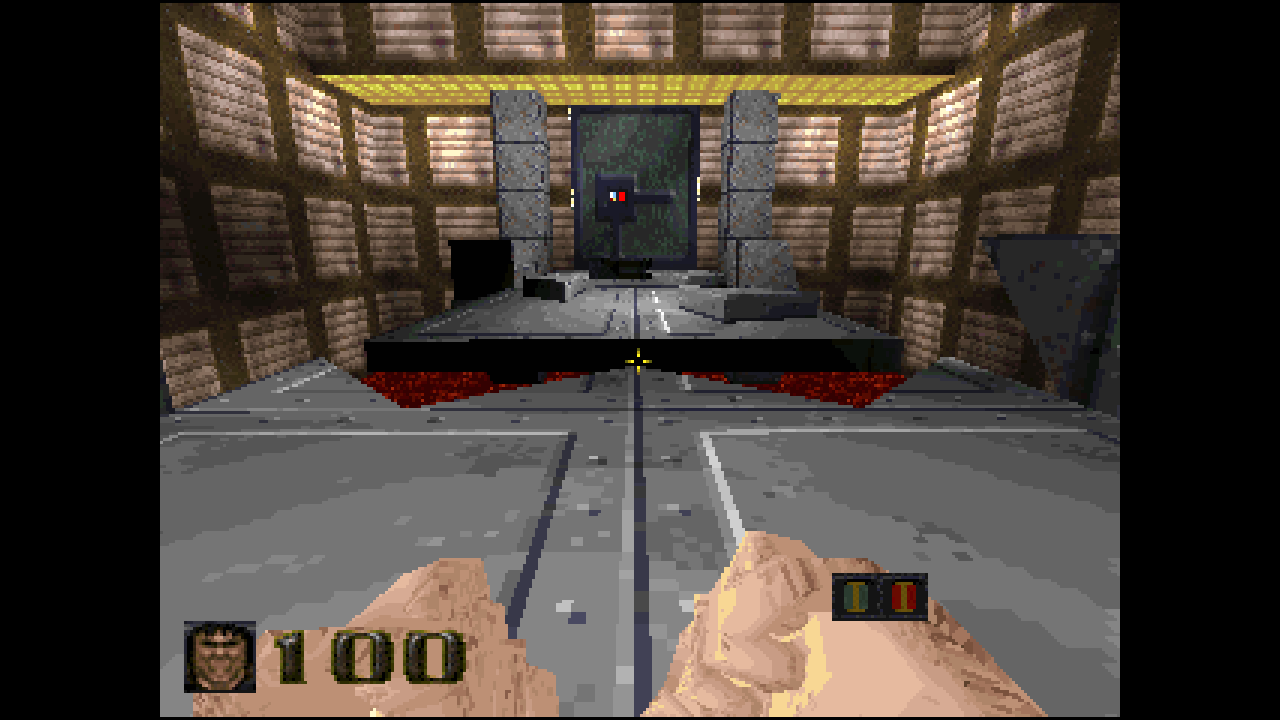
|
| Beyond the game breaking bugs, a lot of subtle revisions were made to further improve the experience. |
| Some of the levels didn't have names, which are most apparent on the saving and loading screens, but also appear elsewhere, so I numbered and named all of them. I also altered the soundtrack tags for a lot of the levels, as they would cause music to play on a PC if a CD was found. |
| Several incomplete entities would cause error messages to display, so I located and removed them for a more polished presentation. |
| Likewise, a lot of the triggers in the game would play a sound upon activation, despite otherwise being invisible to the player, so I removed the sounds from the triggers to prevent any unnecessary distractions. |
| On screen messages were used as a form of storytelling in some levels but not in others, and they didn't really add to the plot whilst also hurting the immersion, so these were removed to create a more consistent experience. Likewise, all of the gameplay related messages, such as needing to find a button or disovering a secret area, were rewritten for consistency and to read more like they do in Quake. |

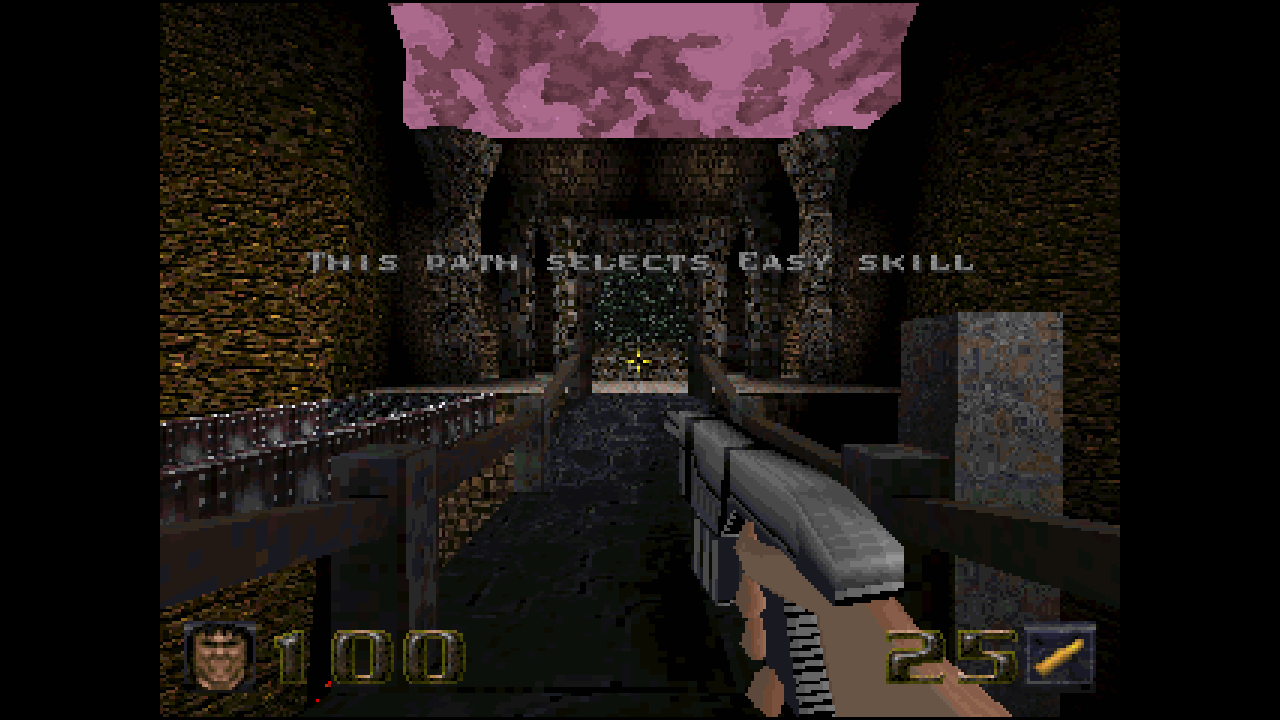
|
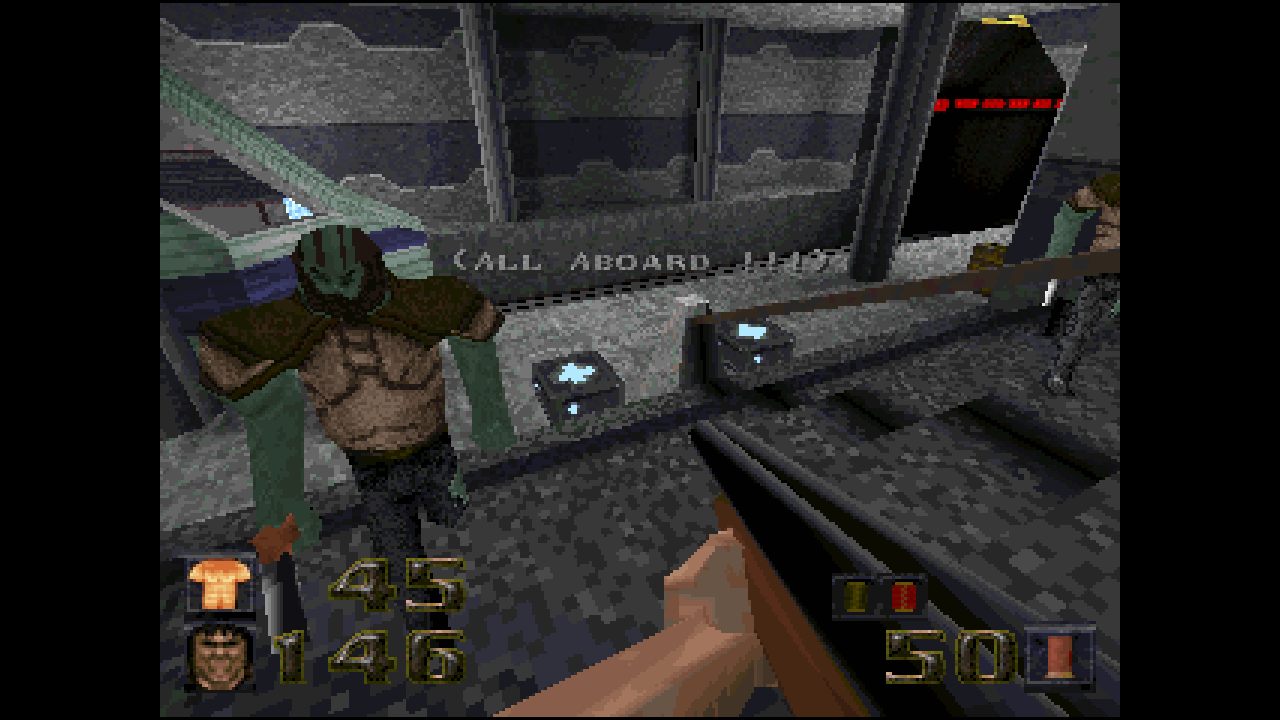
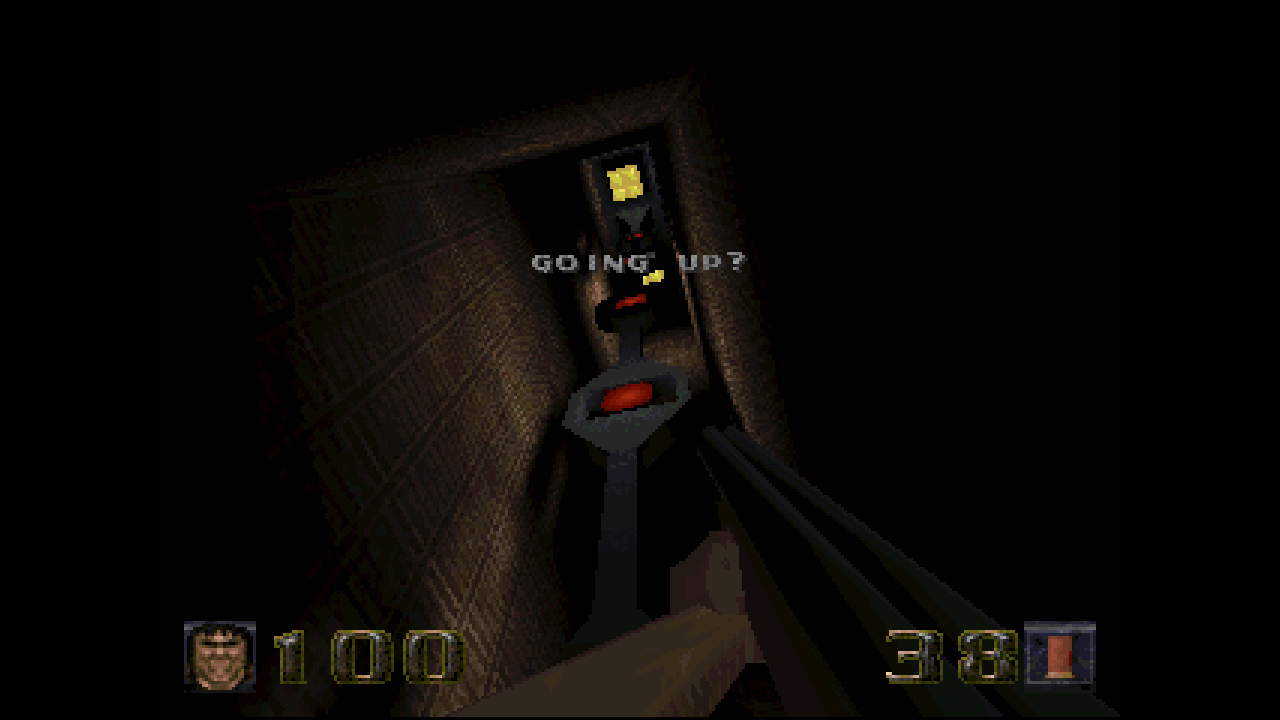
|
| A couple of instant death situations were tweaked so that they dealt less damage or gave the player more time to react, whilst one was removed entirely; standing still at the start of E4M1 would cause rocks to fall on the player and kill them. |
| Several important sequences were also made easier to trigger, such as the formation of the wind tunnel in E4M2, as there were several instances in the game were you could find yourself wandering around for a moment, as you'd missed the invisible trigger needed to progress. |
| In a similar fashion, I placed a sound effect by a destructible wall in E1M2, to help signpost it, and then removed an enemy from the end of the wind tunnel that was awkwardly blocking it. |
| The speeds of several moving platforms and elevators were altered, with pauses added to some to give the player time to get on and off of them, whilst some were slowed as the player would need to drop back down them. |
| At least one door was changed to open on approach, as it originally had to be shot to open, which wasn't clear and could momentarily hault your progress, whilst some were given additional means of opening, making progress easier. |
| The positions of health, ammo, and even enemies were sometimes tweaked so that they were no longer clipping the geometry, with two enemies even found to be outside of the play area in E3M1. |

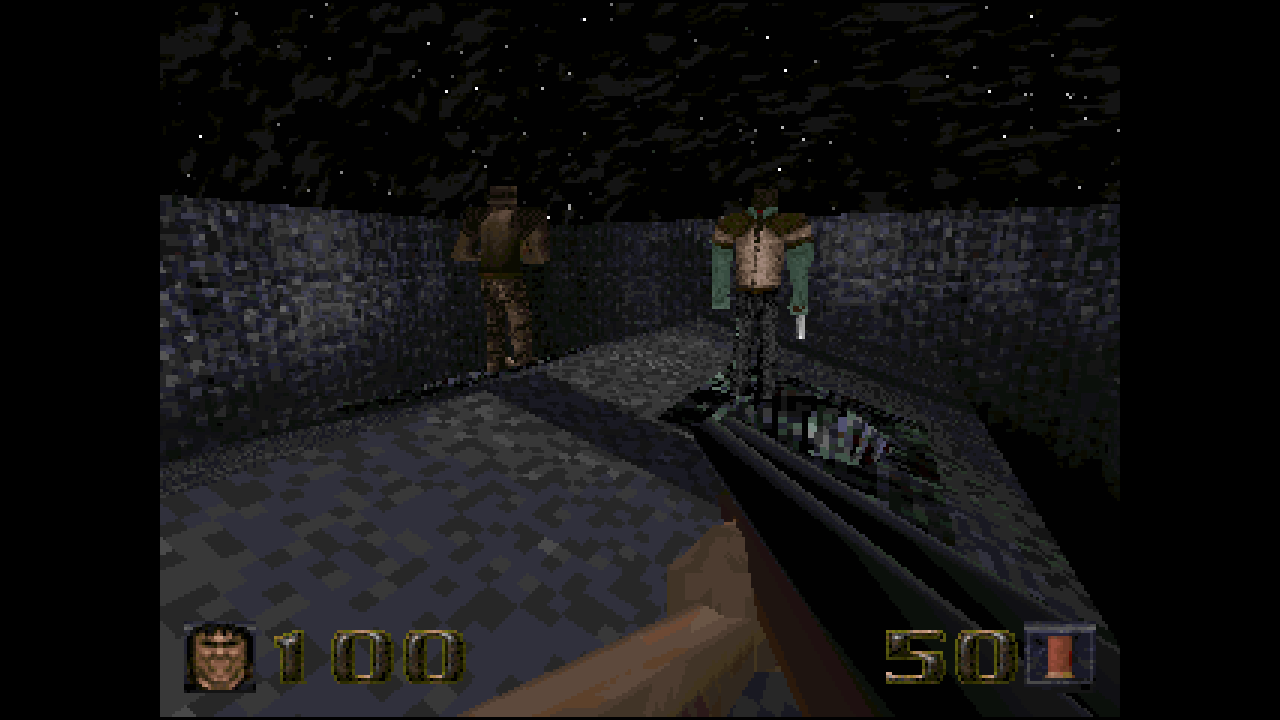
|
| The layout of items in some areas were also tweaked to work better, such as the key card in E2M3 being repositioned between the crushers, and the items behind it being moved to reward some slight exploration. Additional health and ammo was also placed in select areas. |
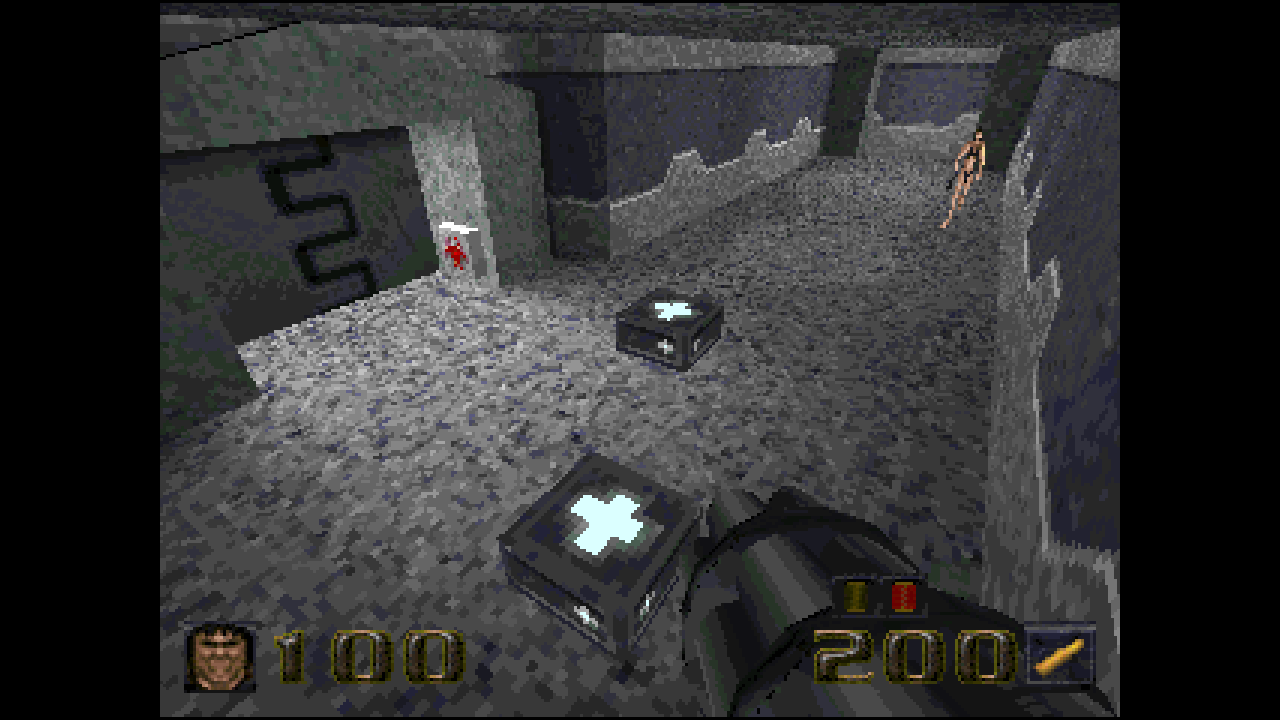

|
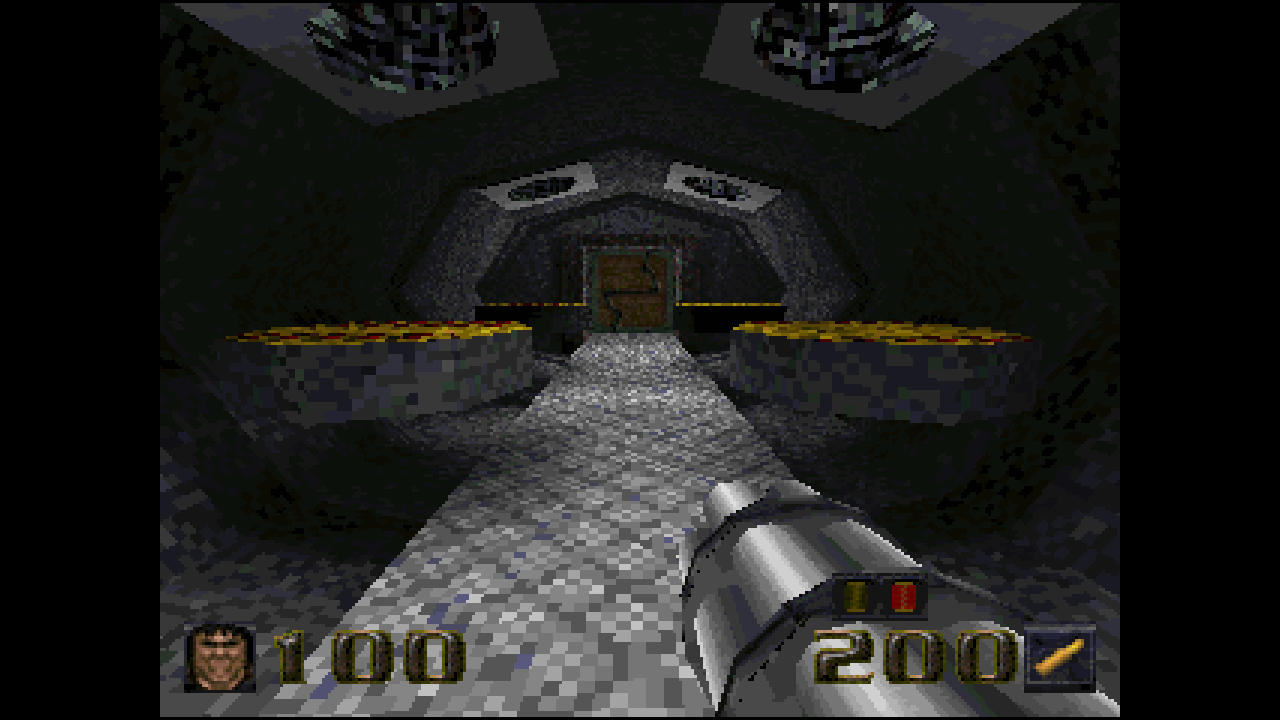
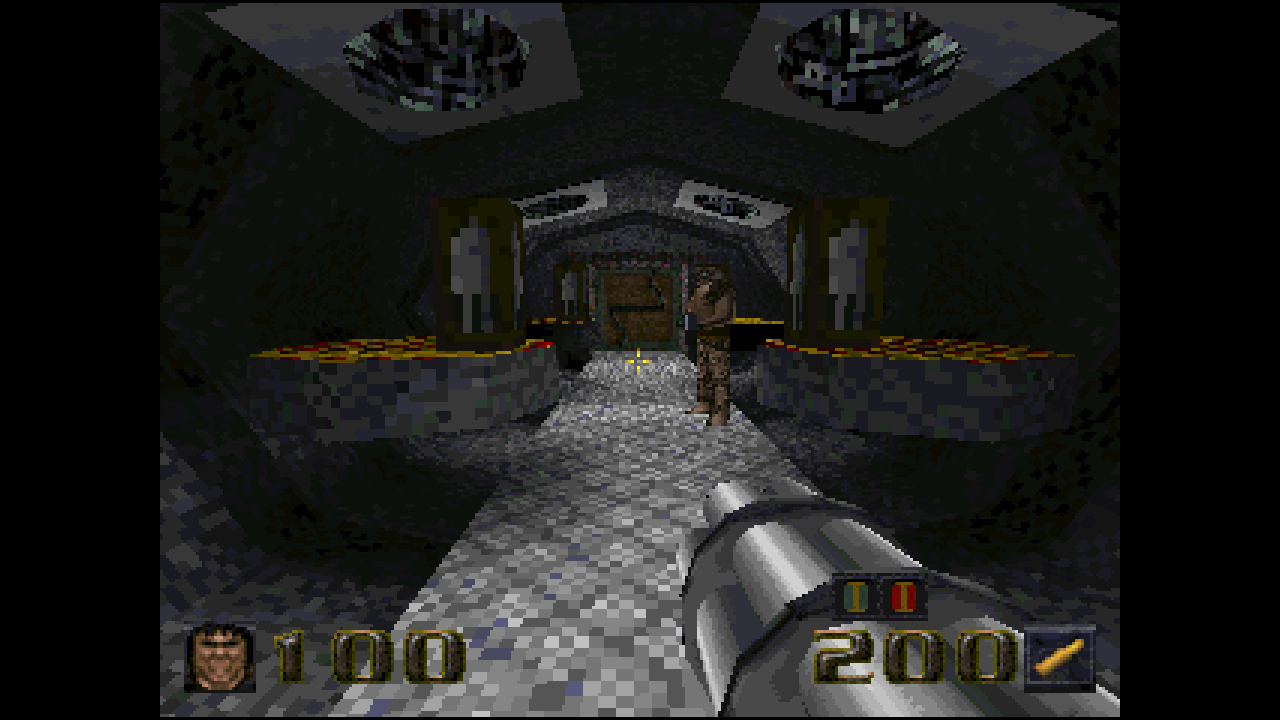
|
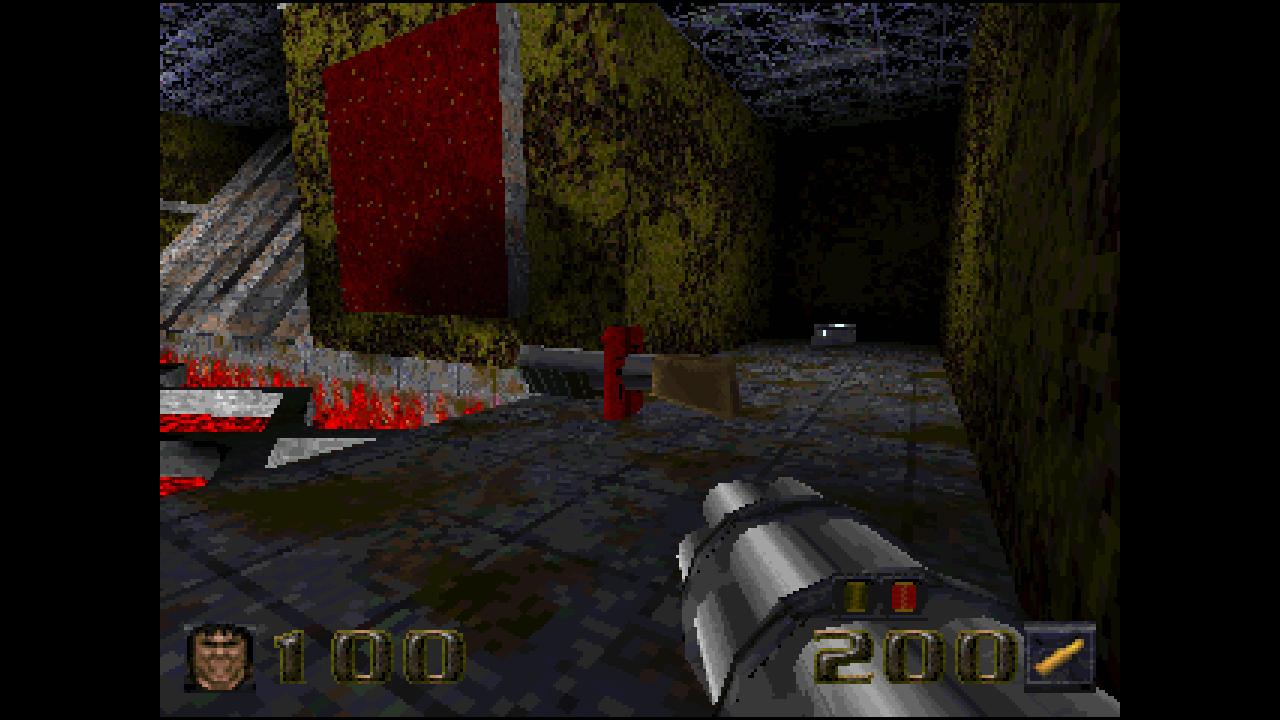
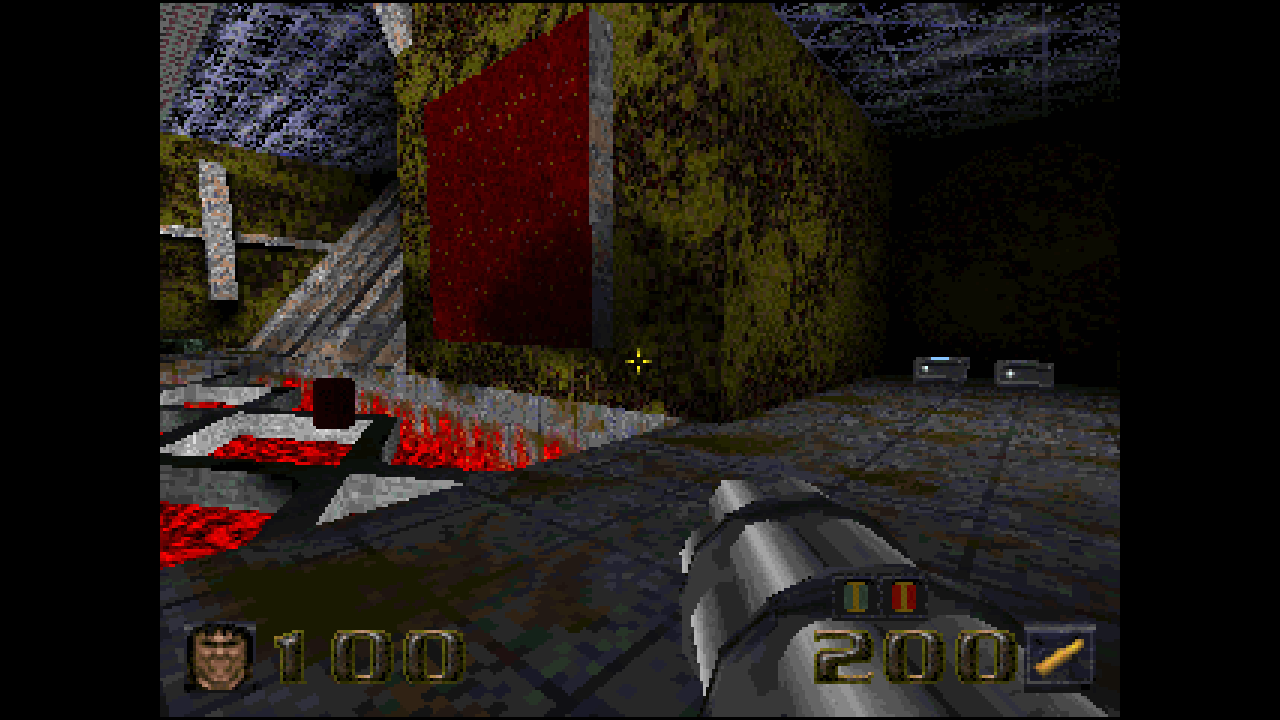
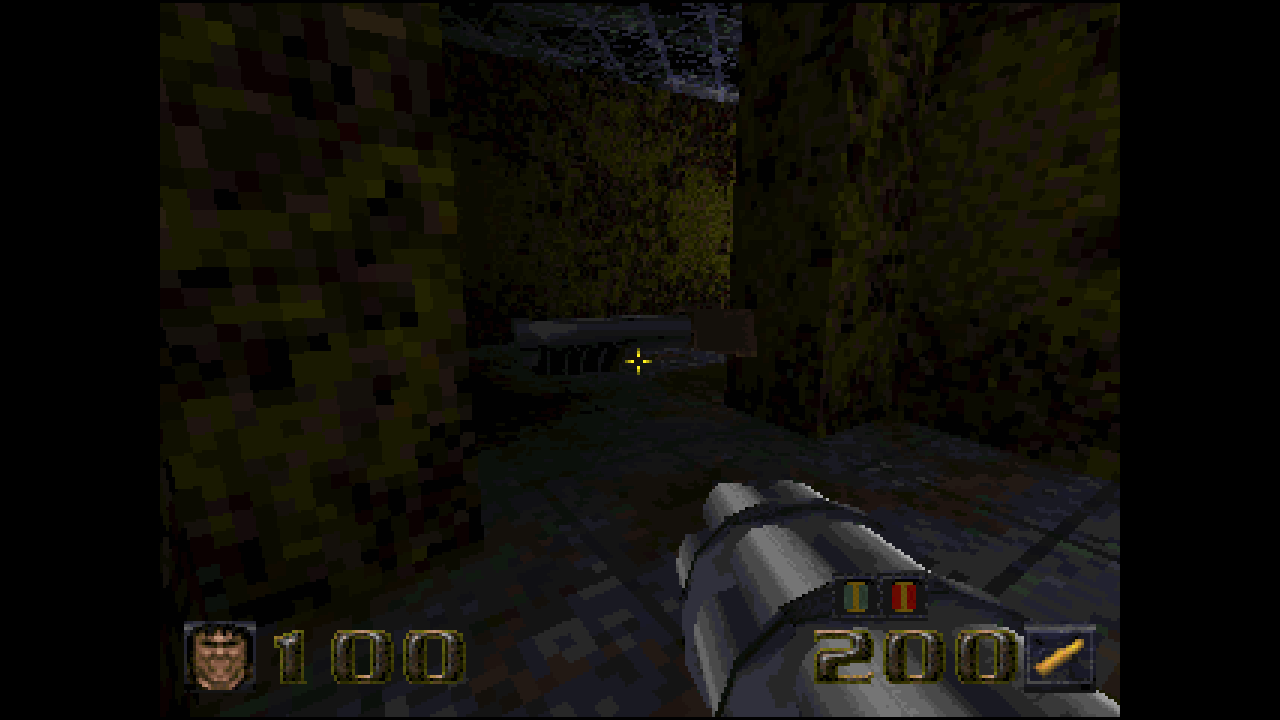
|
| Minor adjustments were even made to the players spawn point in several levels, with the direction that they're facing corrected in two levels and their position changed to start them behind cover in E2M3. |

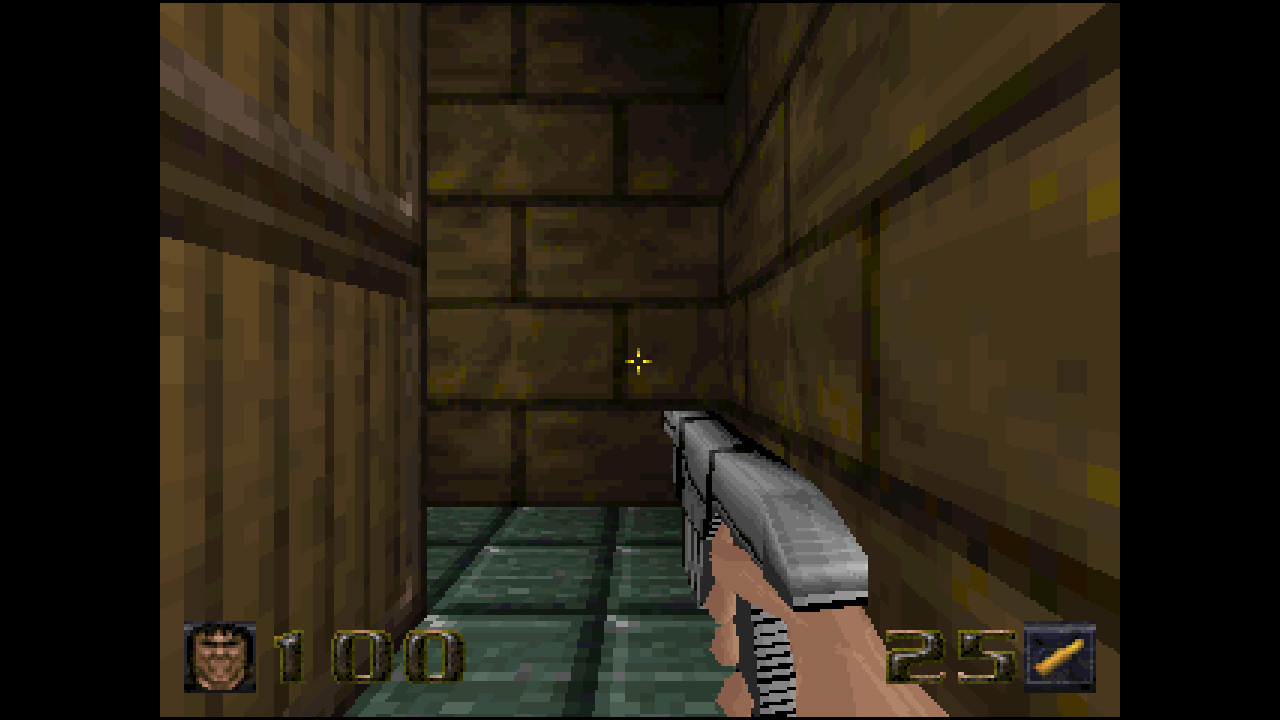
|
| Several secret areas were not setup correctly, so whilst a message would appear on screen to tell the player that they had found one, it wouldn't actually count in-game. I fixed all of them, also making one of them harder to find and adding additional items in to some of them to better reward the player. I then removed the trigger from a room near the start of E3M1 because it just wasn't hard to find. |
| Preview versions of the game were given to the Dreamcast Junkyard and Gamesreup, and the mechanics of two areas were changed based upon their feedback. |
| The ramp that would move to reveal the path to nightmare difficulty in the opening area of the game was altered so that it would now close again after a few moments, giving you the chance to play at a lower difficulty following its discover. However, as the trigger to set the difficulty was tied to the pop up text in the entry way, I ended up having to position 9 additional triggers in order to make sure that the difficulty was set at the right time and couldn't be avoided. |
| In E1M3, there are steps to a button that appear when you get close to them, but these were sometimes missed, and so I set the bottom step to always be out, giving a visual clue that something is there, and then I altered the timings of the remaining steps to change the order in which they appear. |
| In total, well over 100 entities have been edited and more than two dozen additions have been made. And whilst most of the changes are subtle, they make for a much improved experience. |
| Additionally, and whilst trying to remain faithful to the original, I re-wrote the plot to condense it and better suit the scenario, with the prologue now available in-game. |
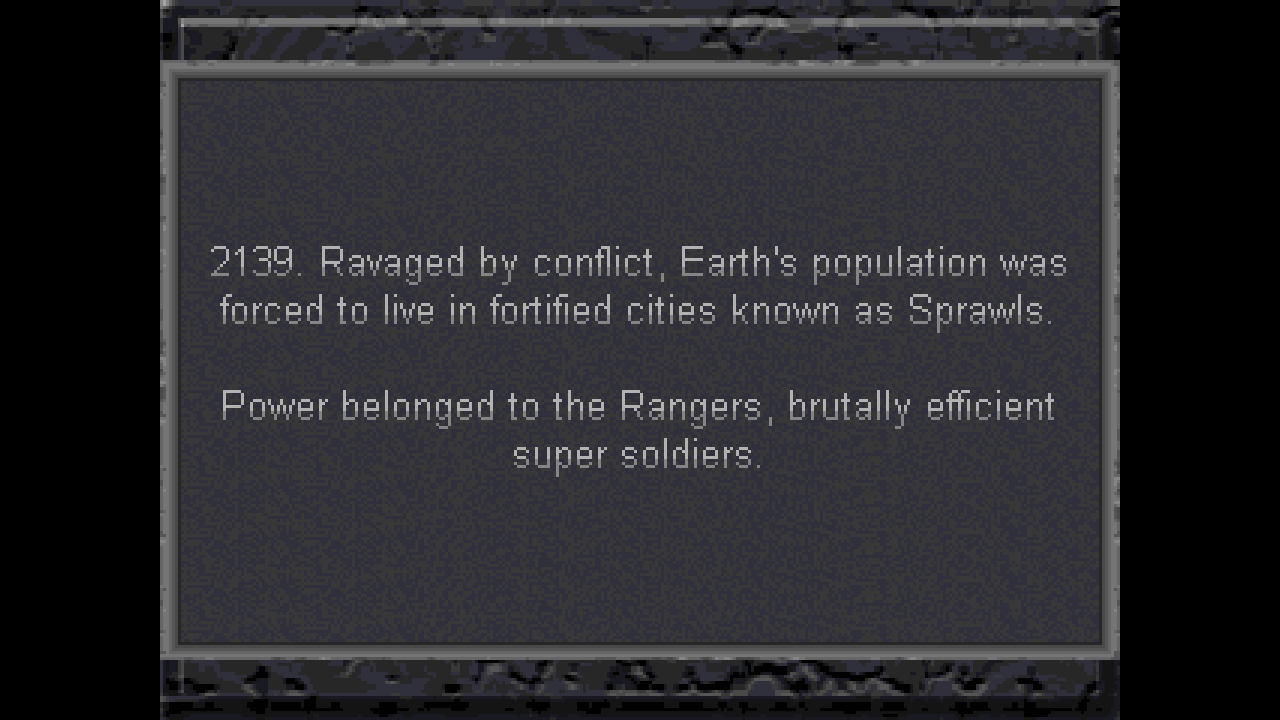
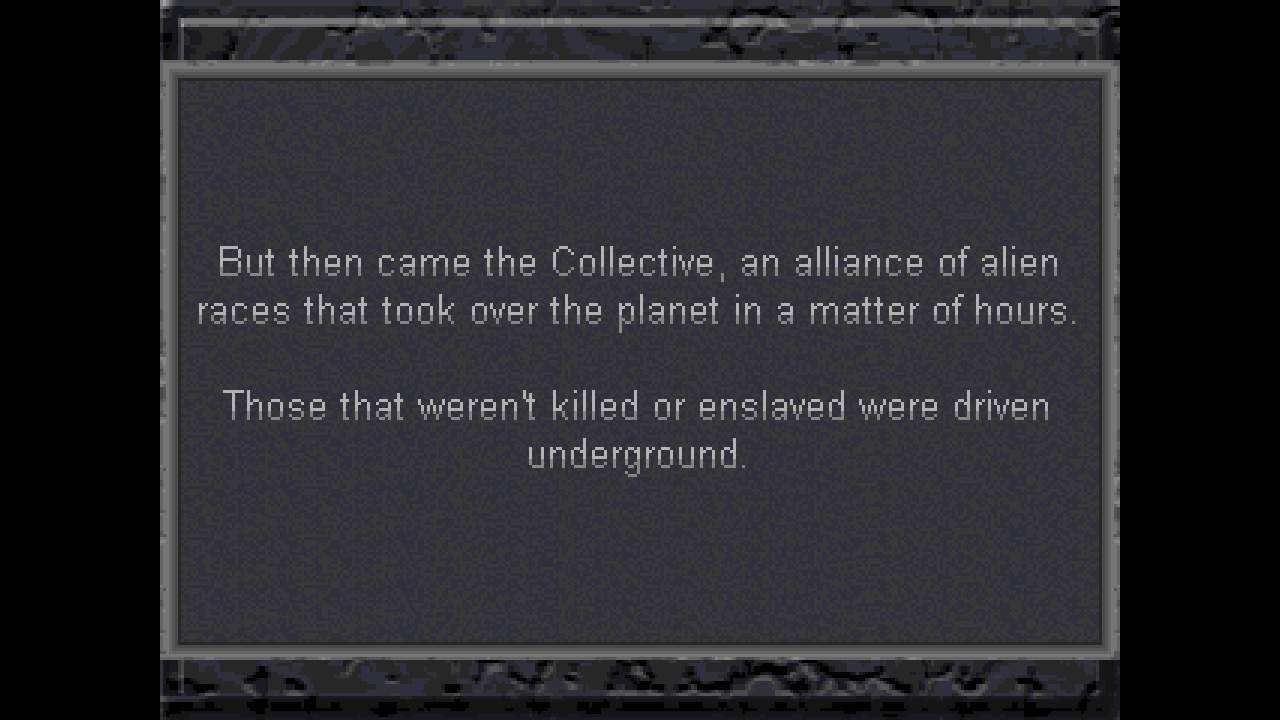
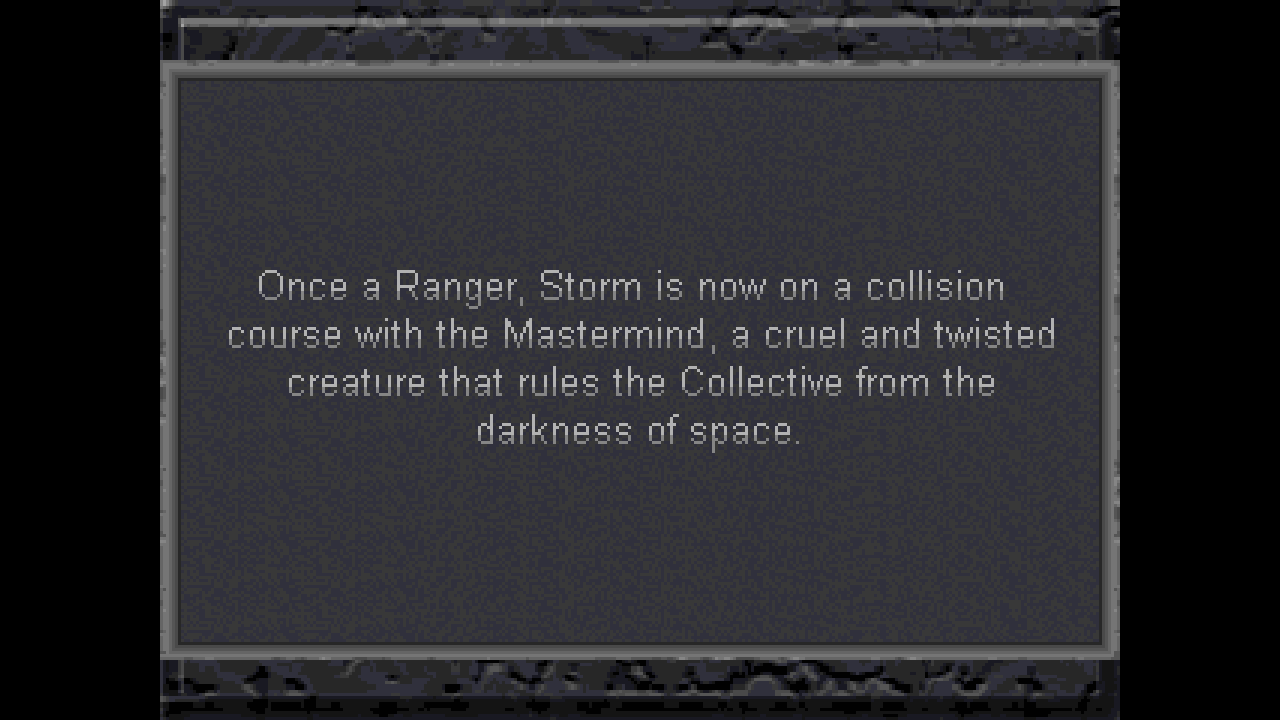
|
| A very kind programmer from the Quake community known as Seven was able to replace the ending text for me, along with implementing the ability to select previous weapons and renaming one the enemies. |
| The enemy, originally called "Bitch", was changed as I felt that its original design was immature and out of place. Whilst the other enemies in the game were either aliens or robots, Bitch was simply a tall woman in a bikini. |
| Now known as "Lass", she appears as a female counterpart to the basic lizardman trooper. |

|
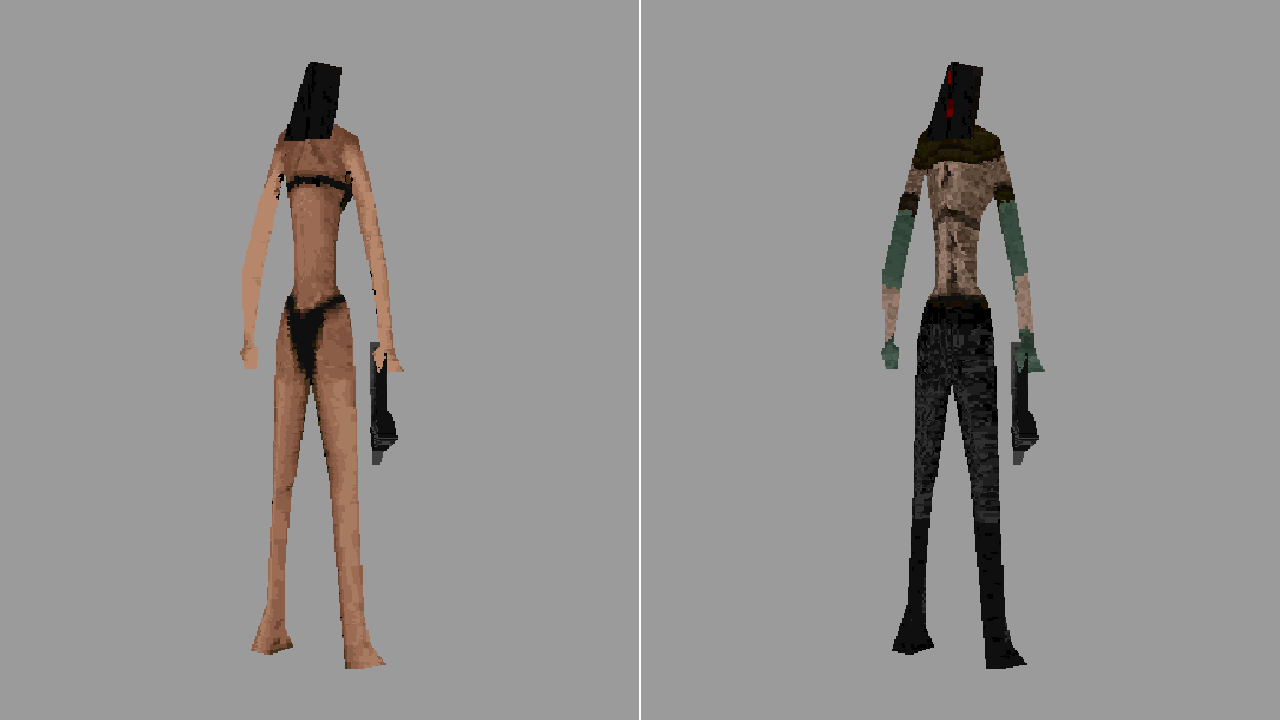
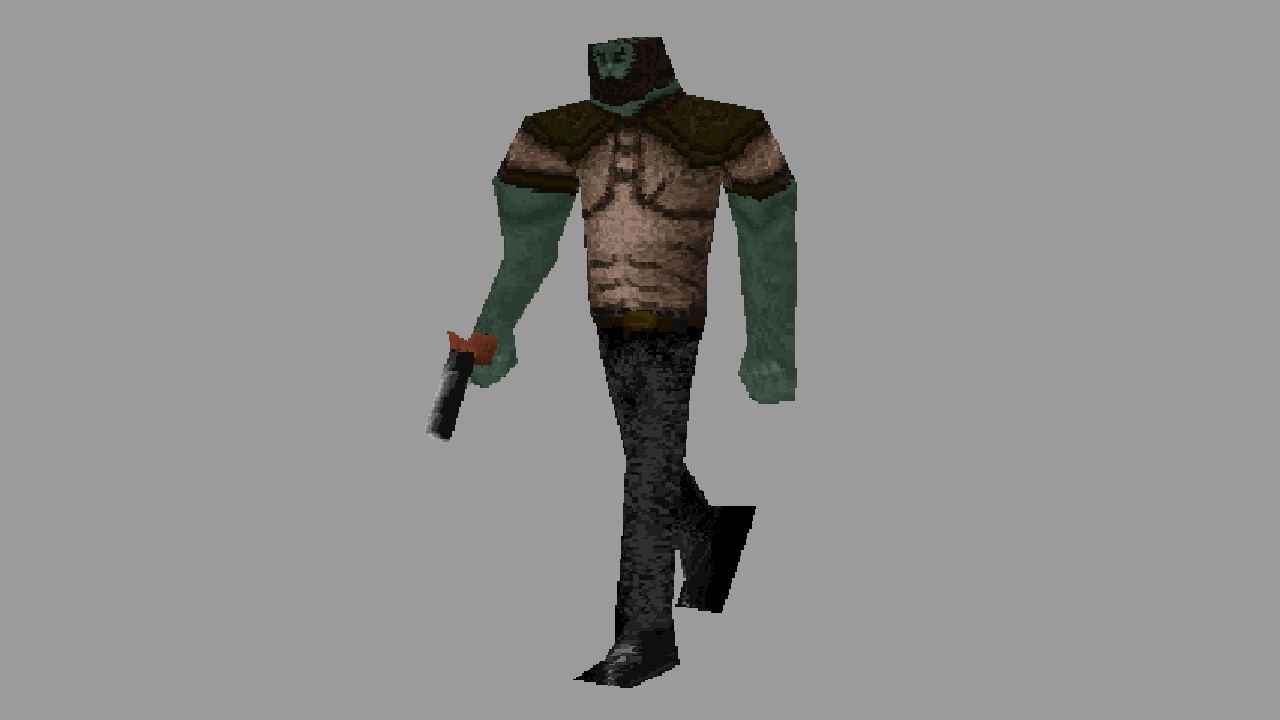
|
| I went on to make a lot of minor revisions to the artwork, such as correcting transparent pixels in the players portrait and stray pixels on the players arms, weapons, and on the enemies. |
| I also corrected fullbright pixels on one texture and regenerated the mipmaps of a couple more, so that they blended in properly with those around them. A random billboard for Quake 2 was also replaced with an existing texture, to make it look more like a solar panel. |
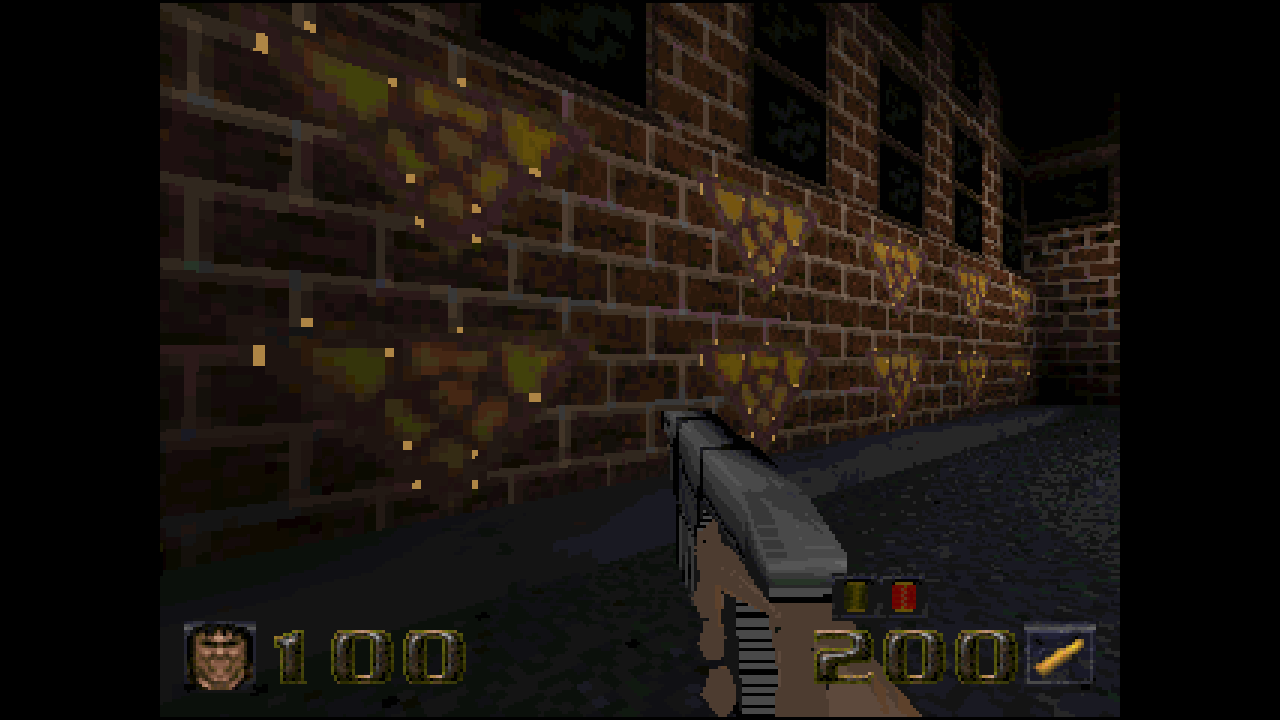

|
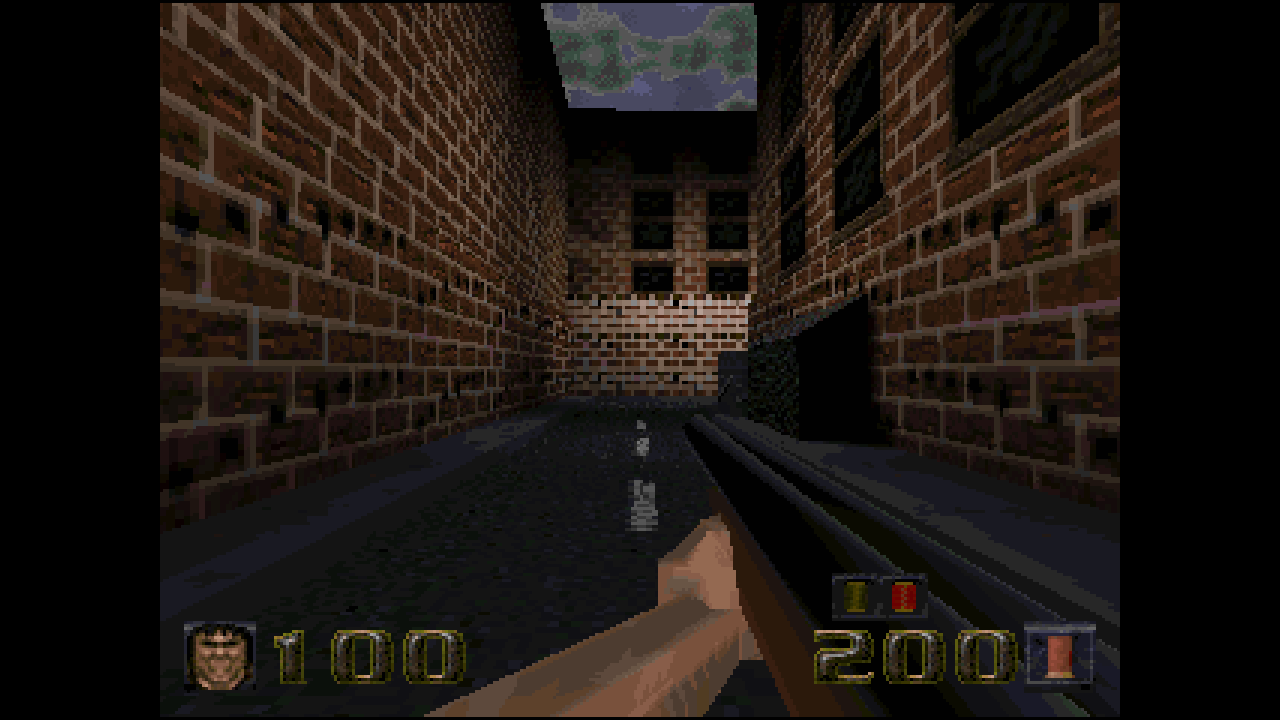
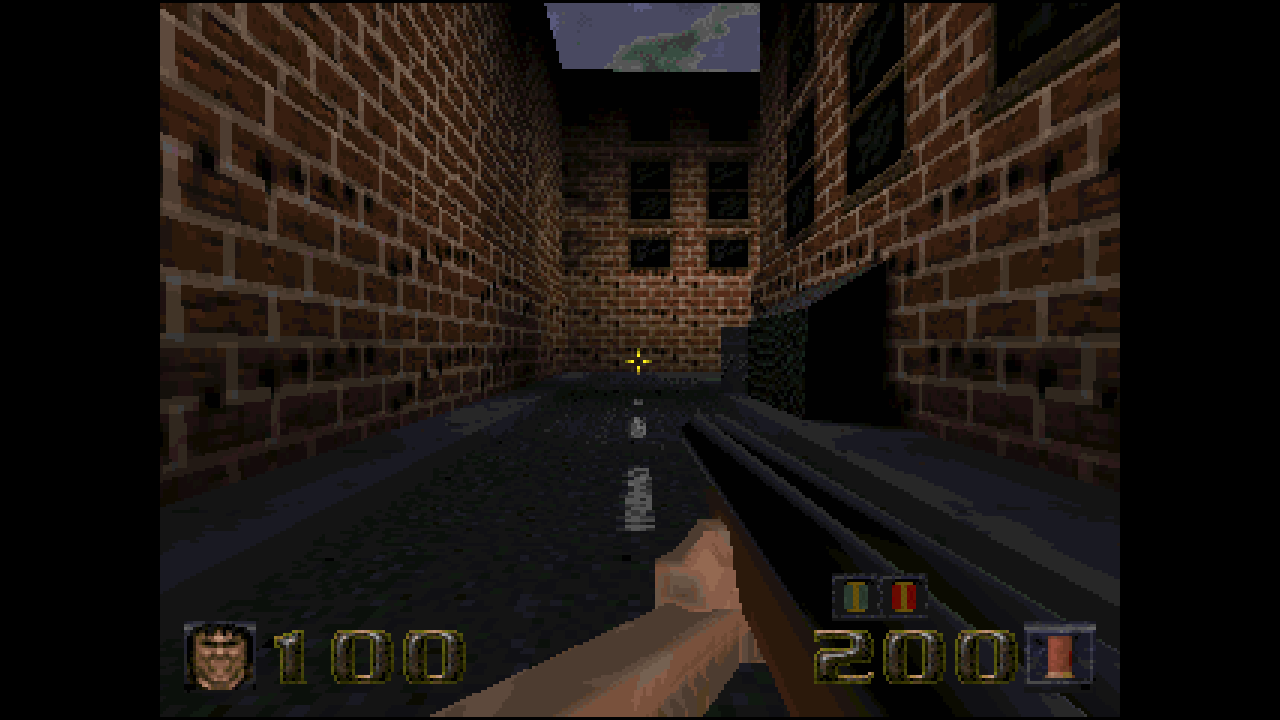
|
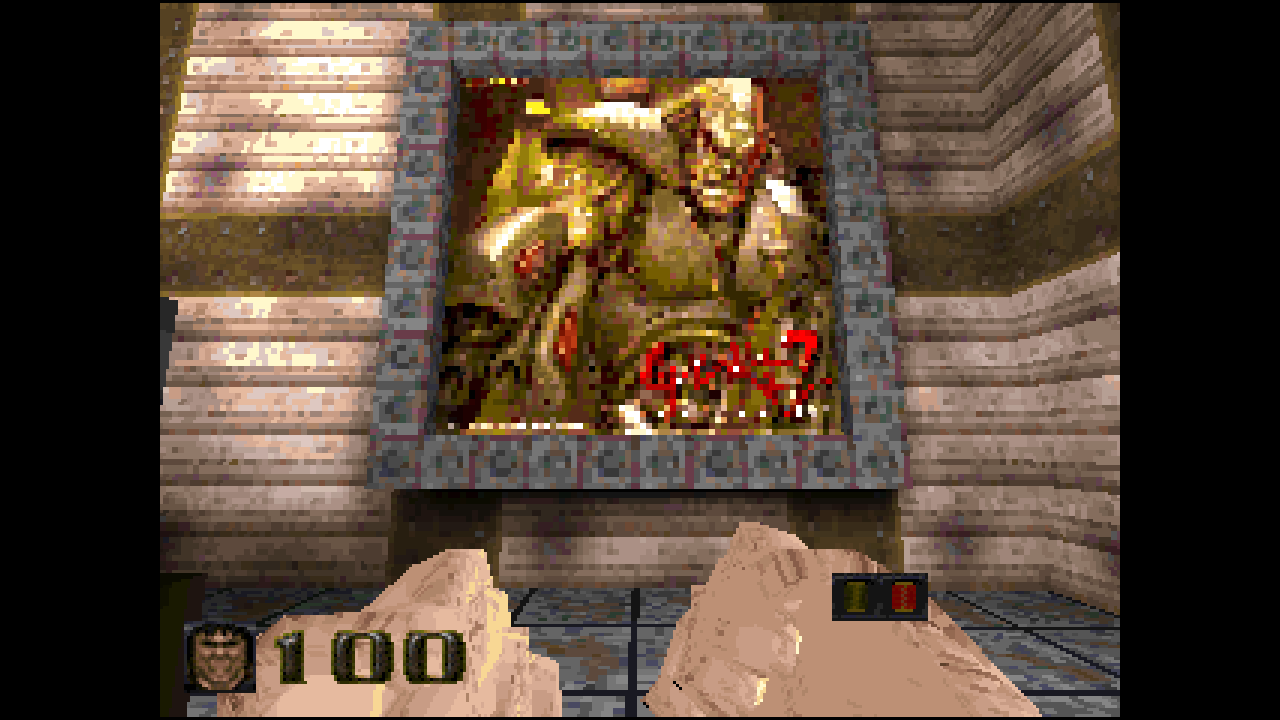

|
| HUD icons for the key cards and explosive ammo were redrawn to better reflect their in-game models and colouring, and the "Help/Ordering" section of the main menu was renamed to "About" by reworking the existing artwork, whilst the "Multiplayer" option was darkened out for the Dreamcast version as it doesn't support this feature. |
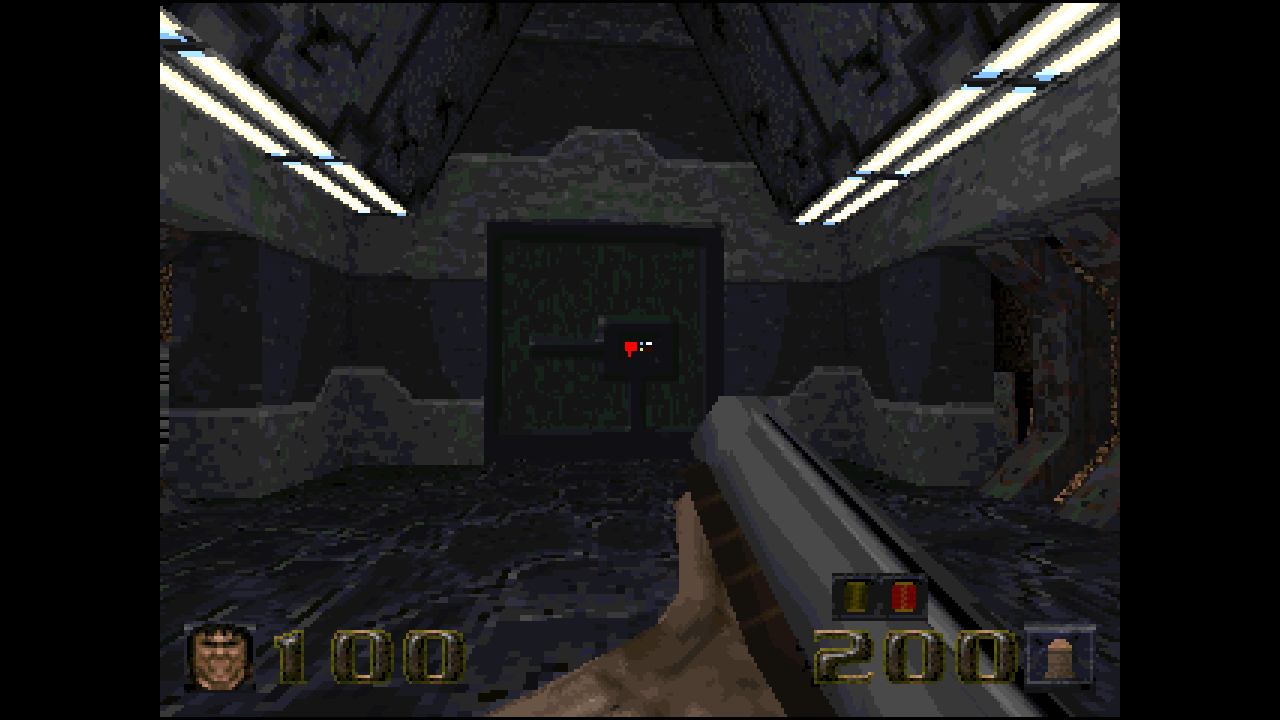
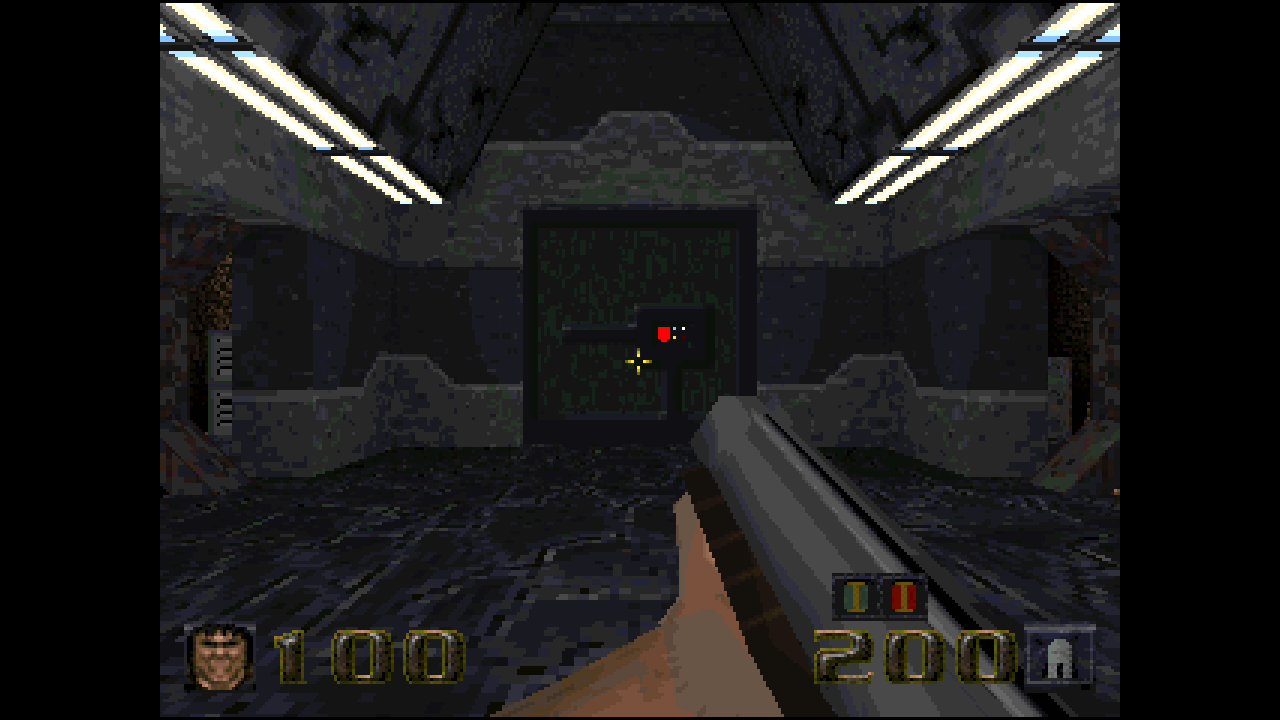
|
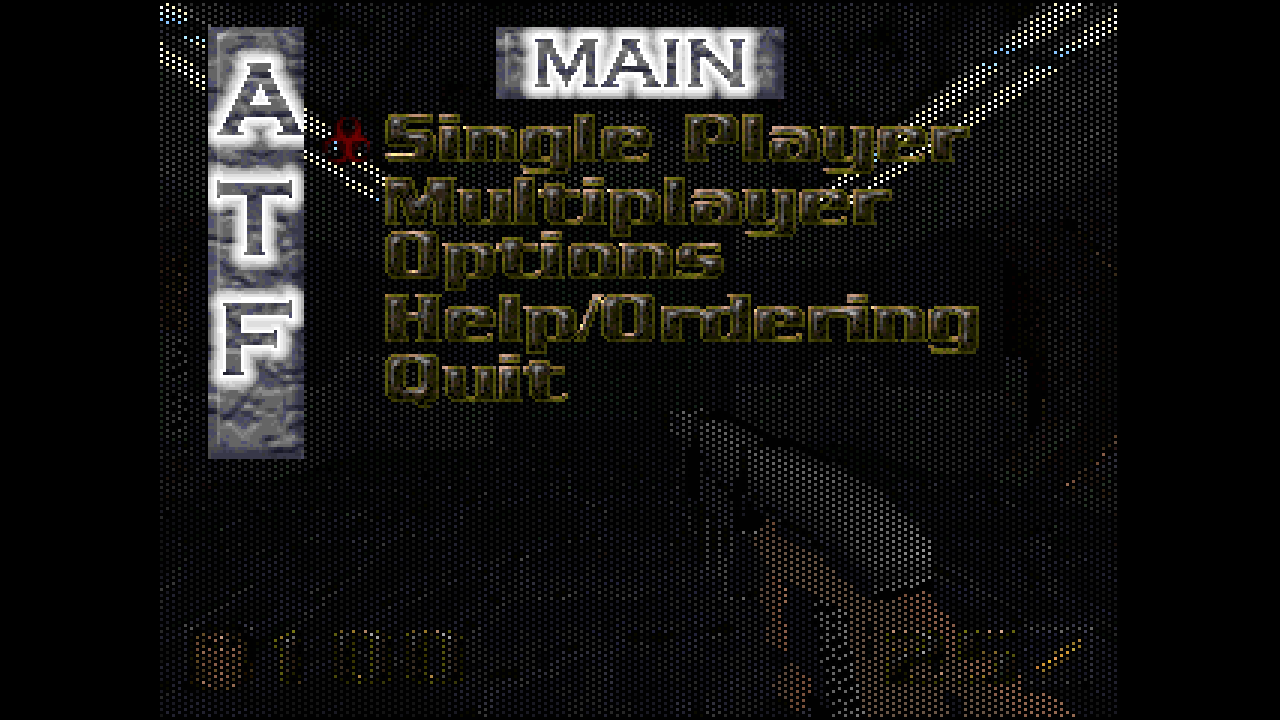
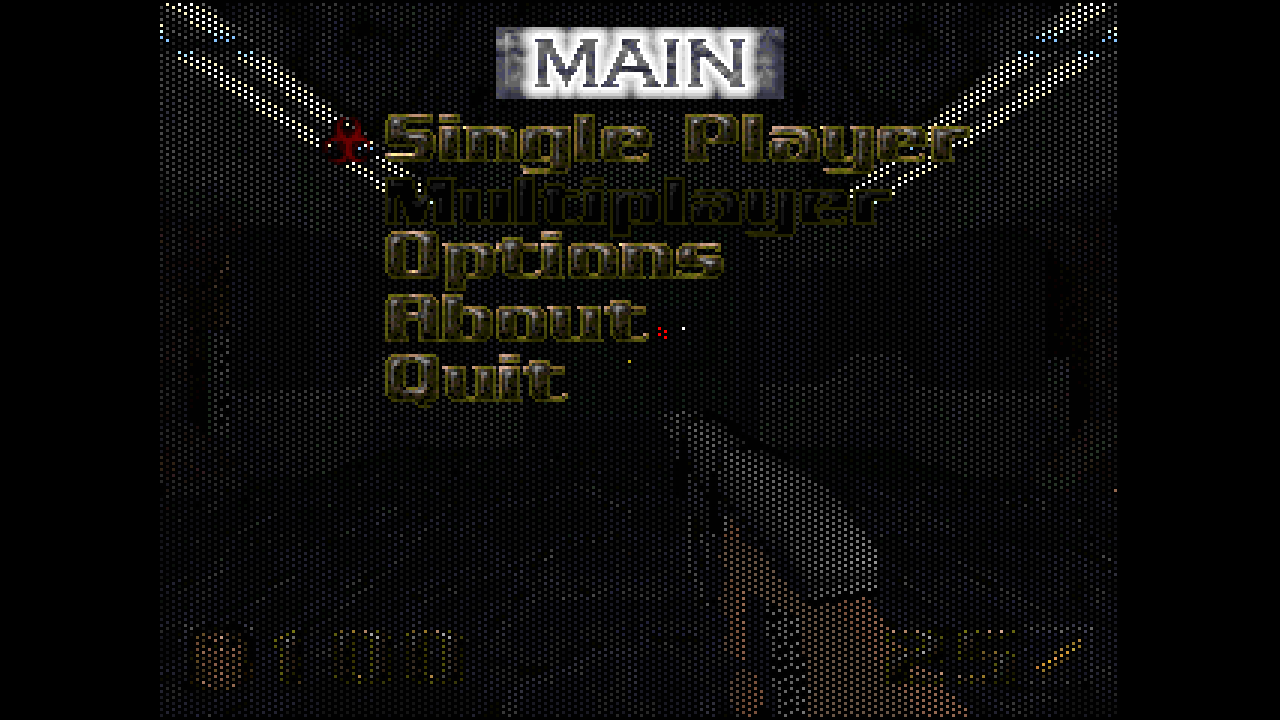
|
| From here, I went on to replace some of Quake's remaining assets, helping to give the game more of its own identity. |
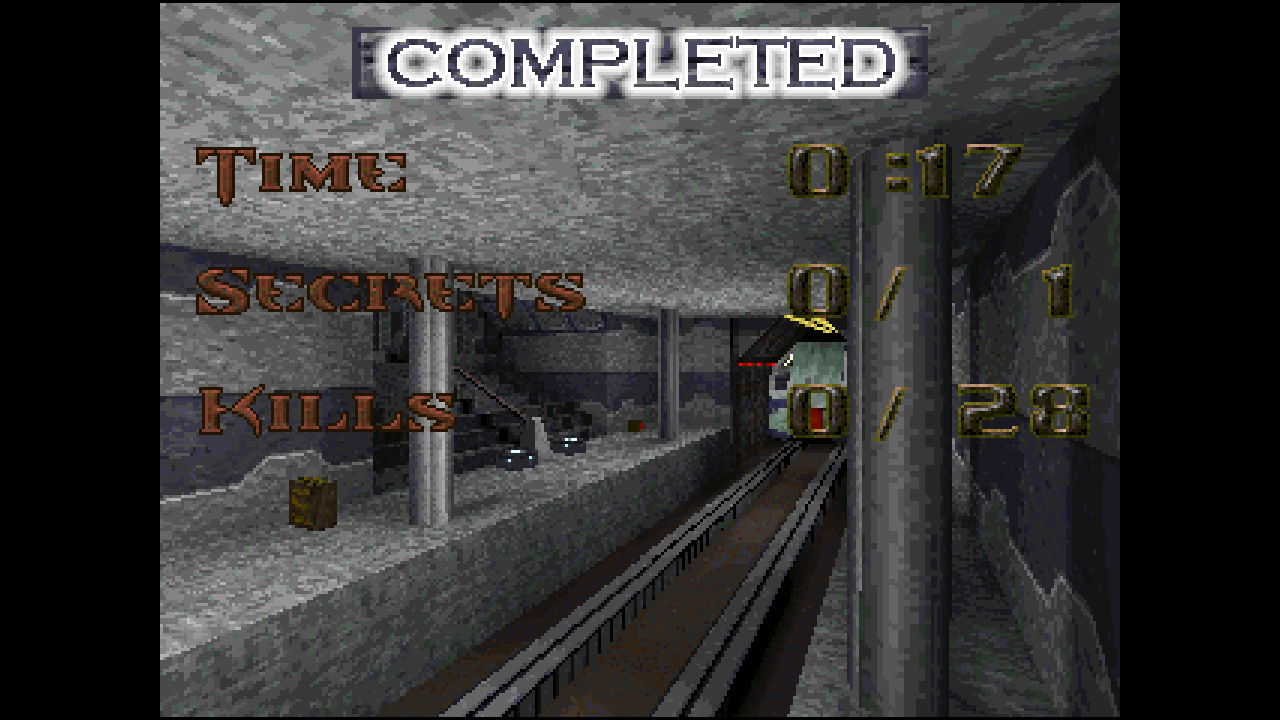
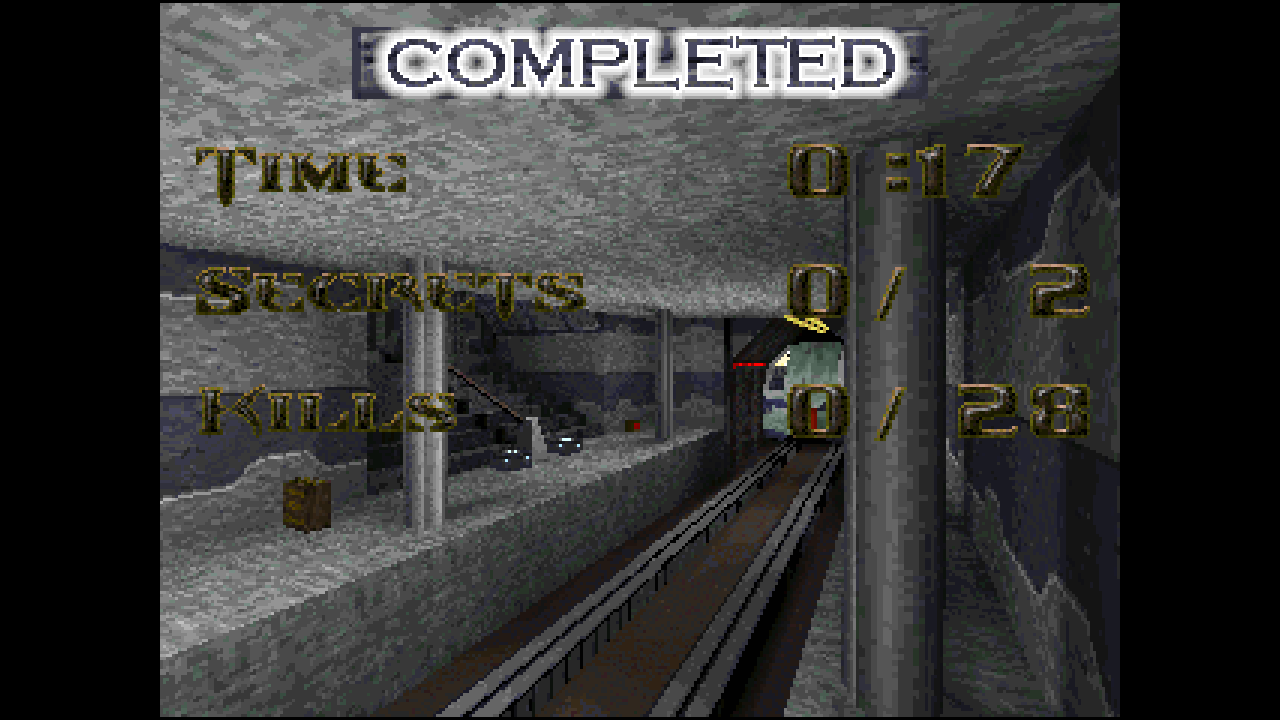
|
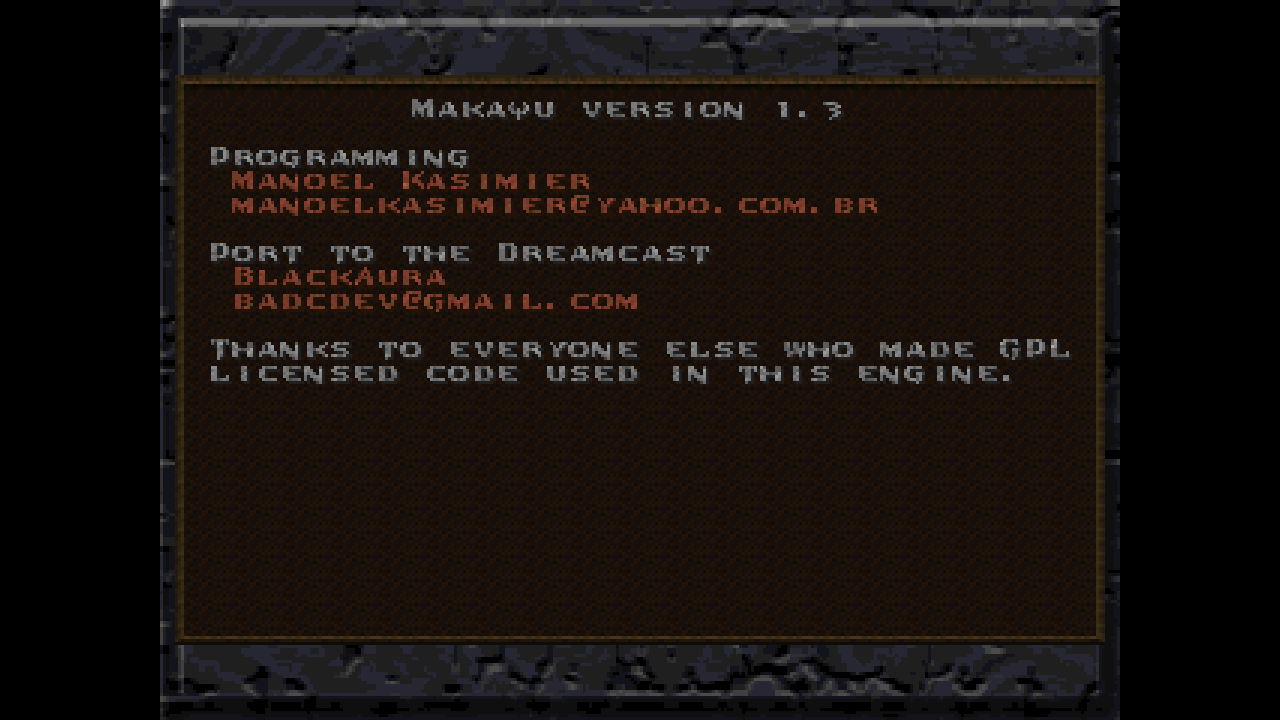

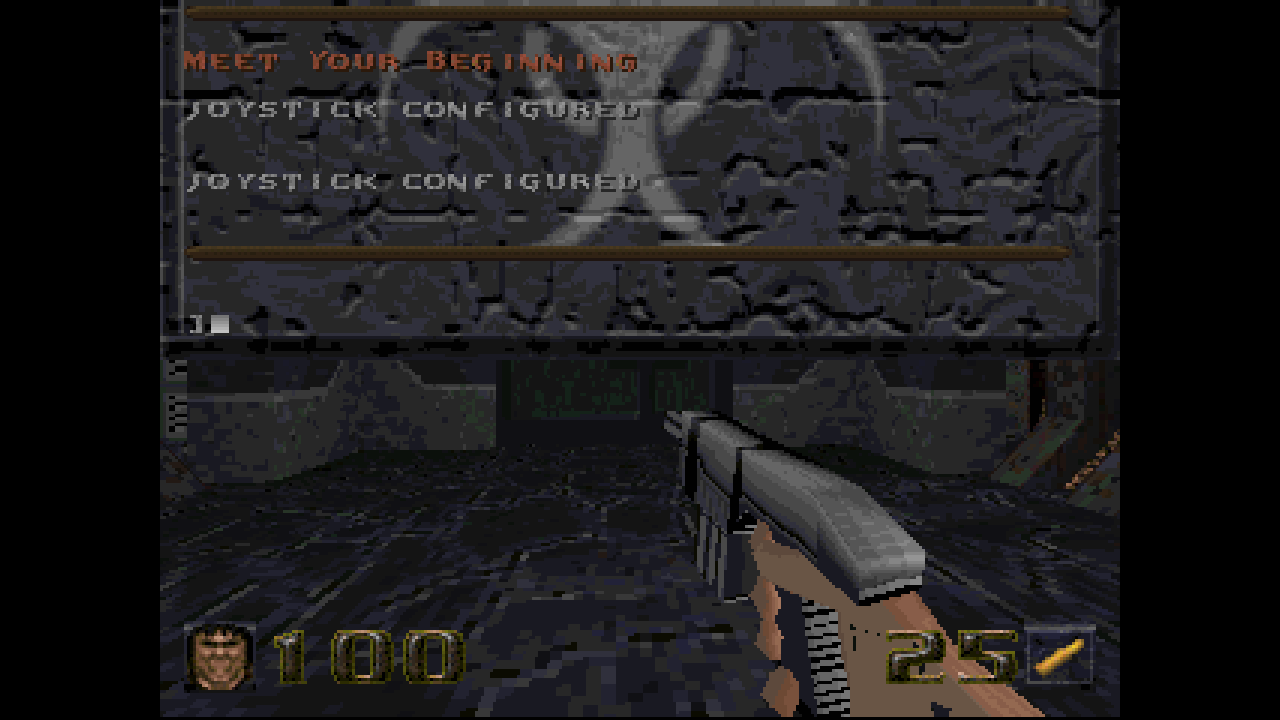
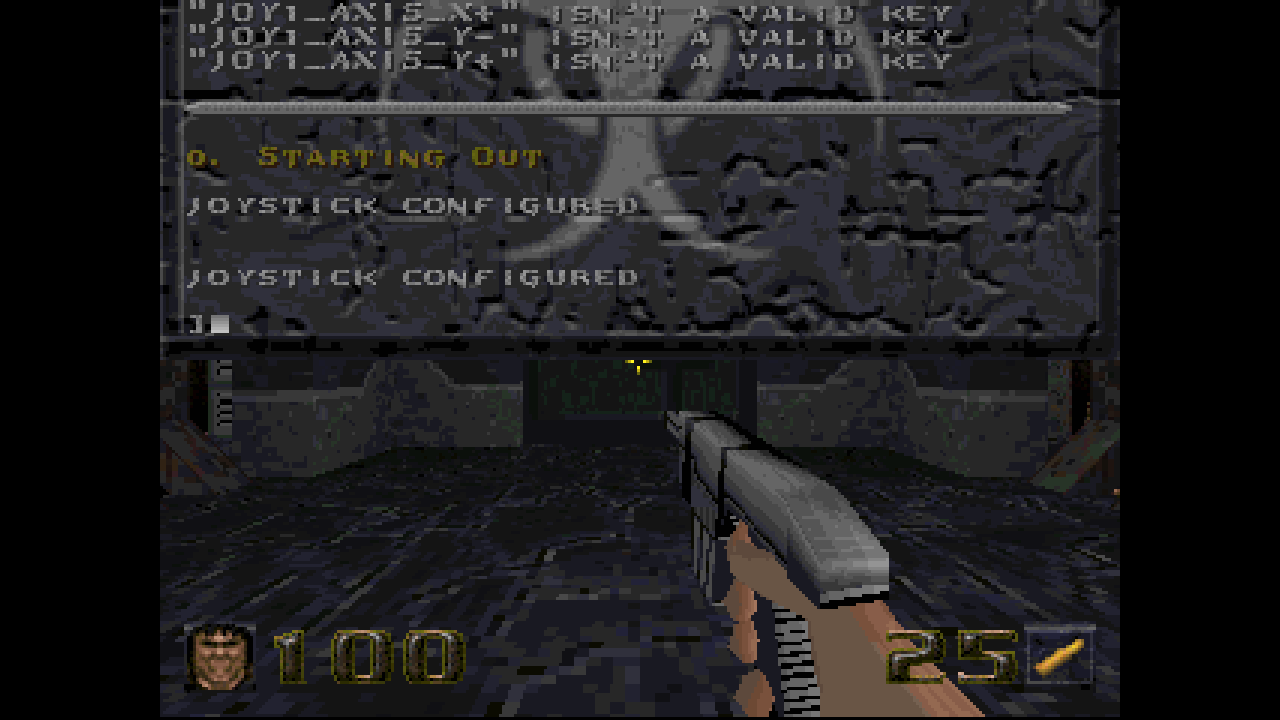
|
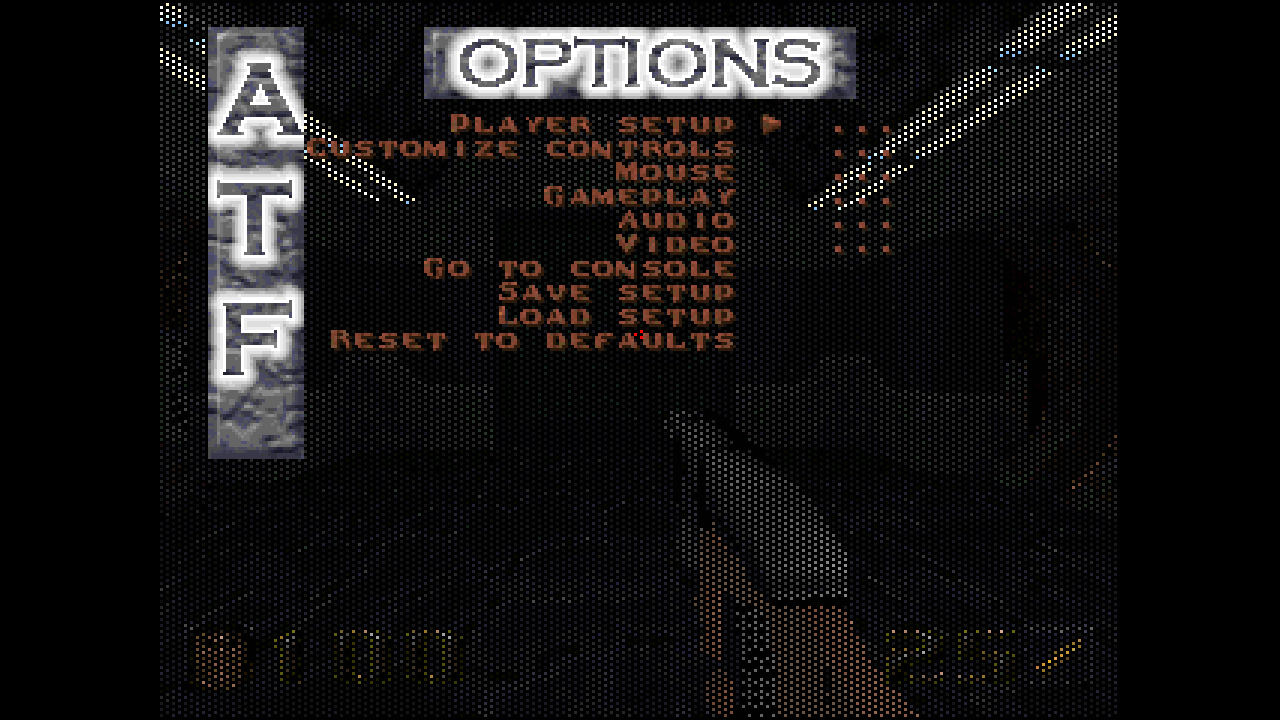
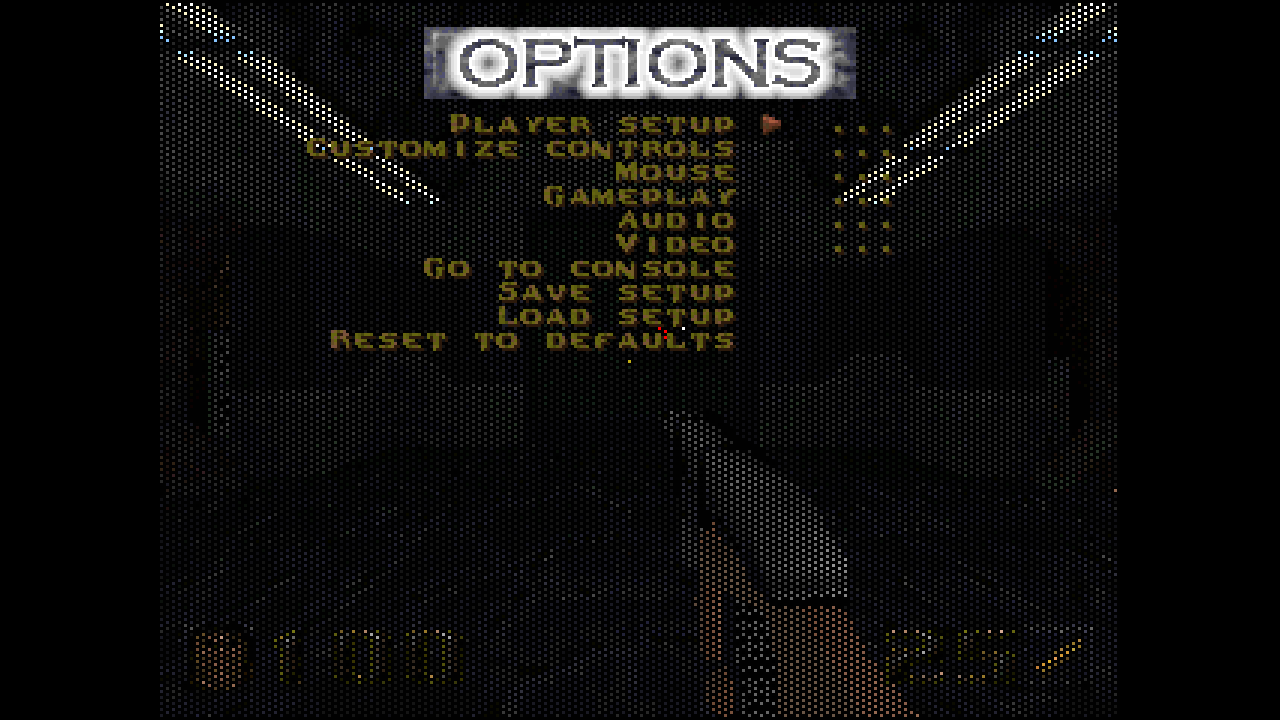
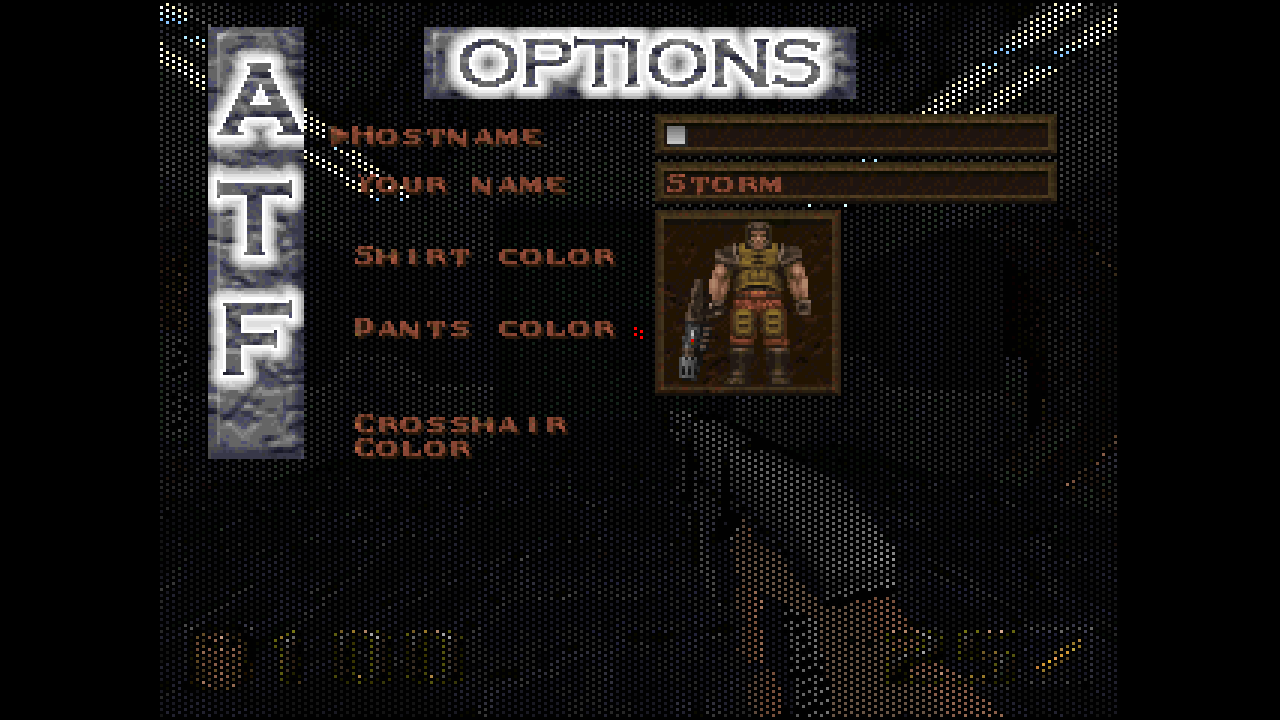
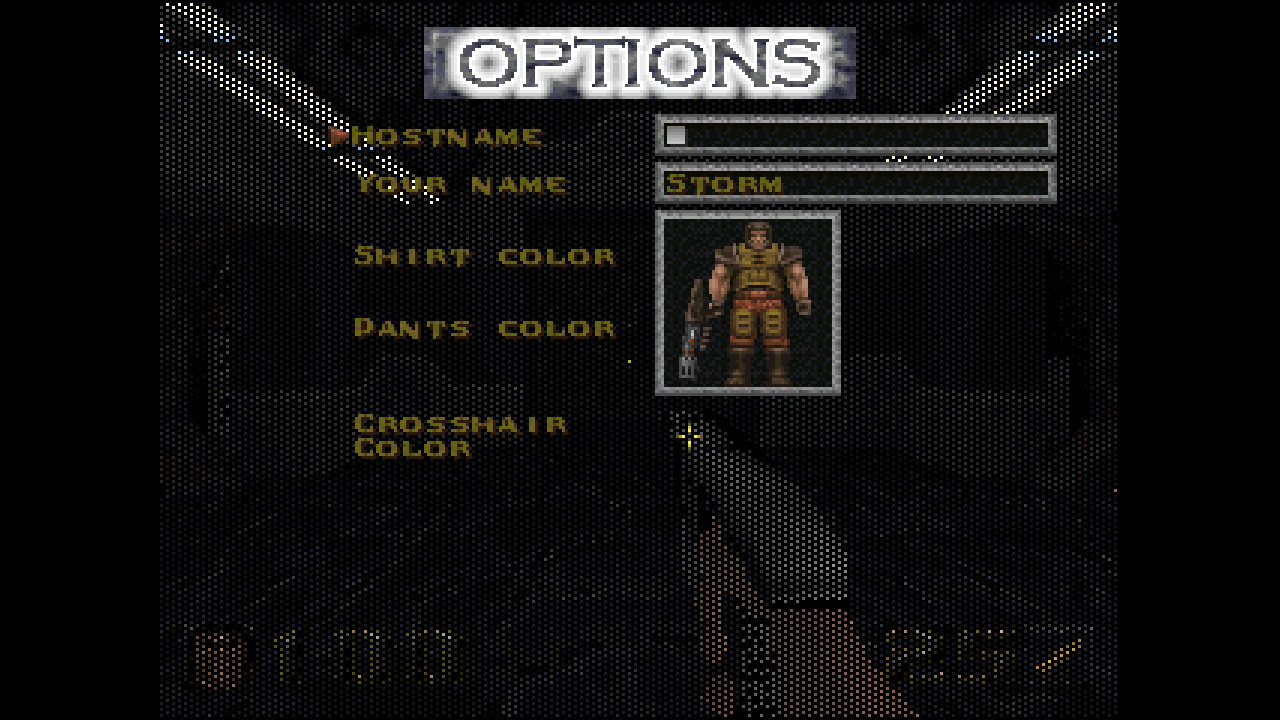
|
| I also recorded new demo videos on some of the games smaller maps to priotitise faster loading times and as the original videos highlighted cooperative play, which isn't a feature of the Dreamcast version. |
| The only element that I cut from the game is some human NPC's that appeared in a couple of spots as they contradicted my rewrite of the story. Removing them had no impact on gameplay. |
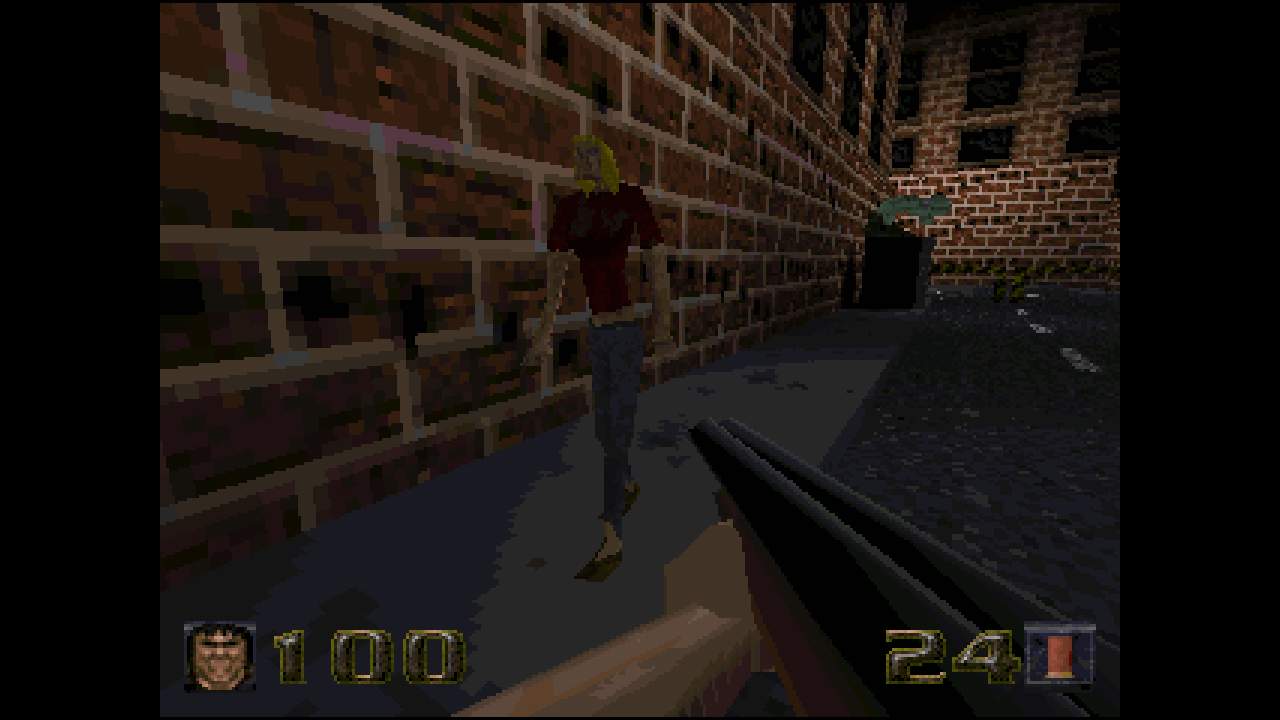
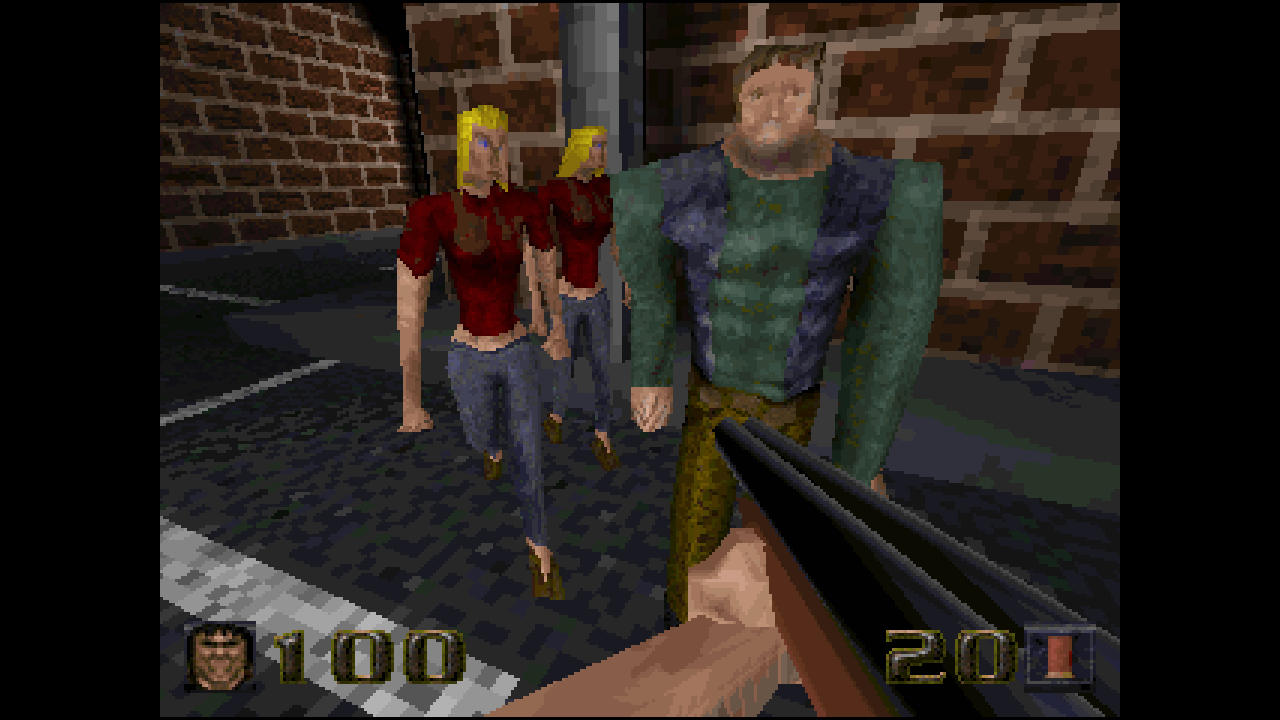
|
| I'm proud of this project and I hope that it helps the game to find more of an audience. |
| It was good to test my focus on a full scale production, having only previously created short demo games, and I was able to gain some further experience in areas of games development that I don't usually work in. |
| Preparing preview content for press and communicating with them was also a positive experience and several Publishers reached out to me upon learning about the game. |
| I'd certainly be interested in developing my own Dreamcast game with id Tech in the future. But, for now, thanks for reading. |
|
|
|
|